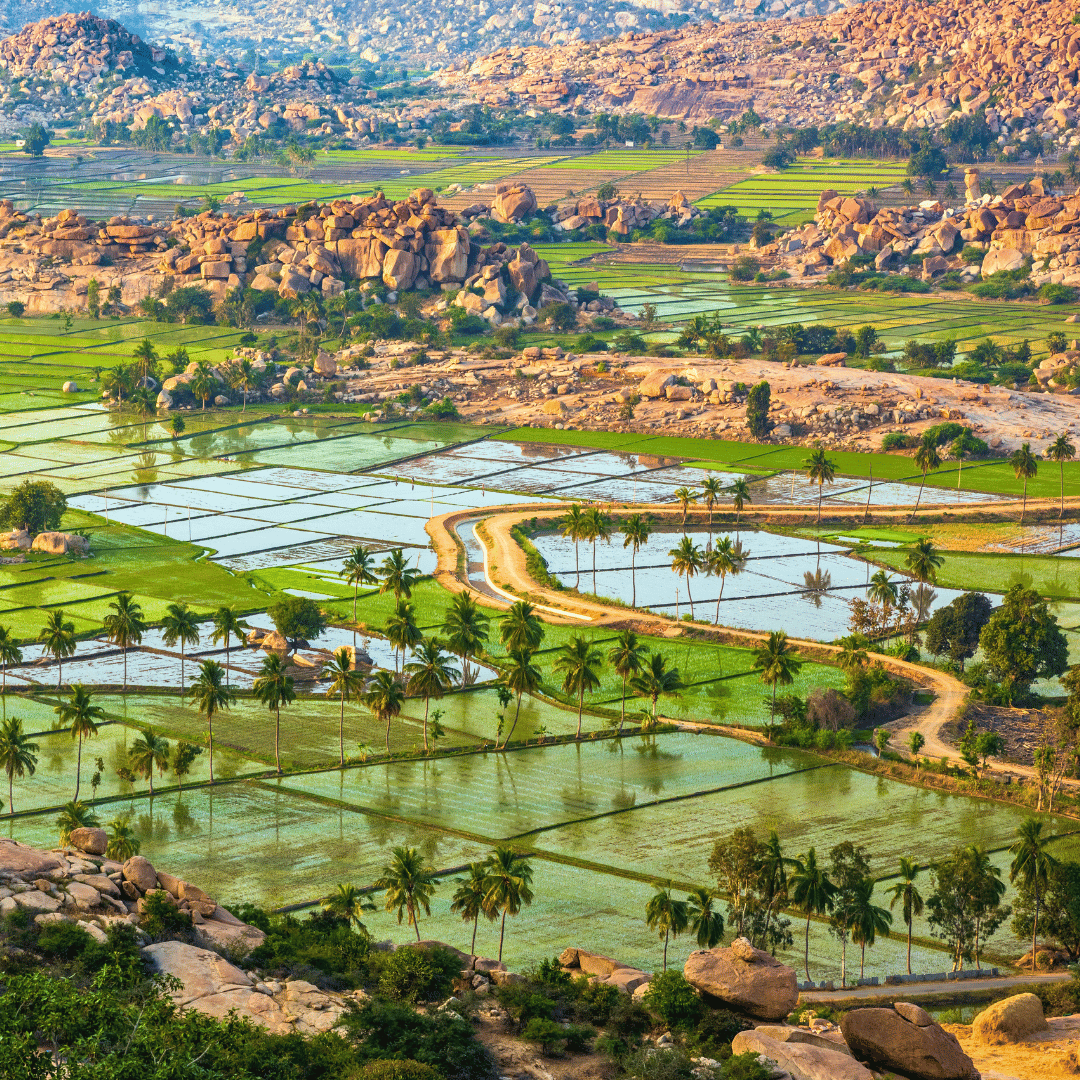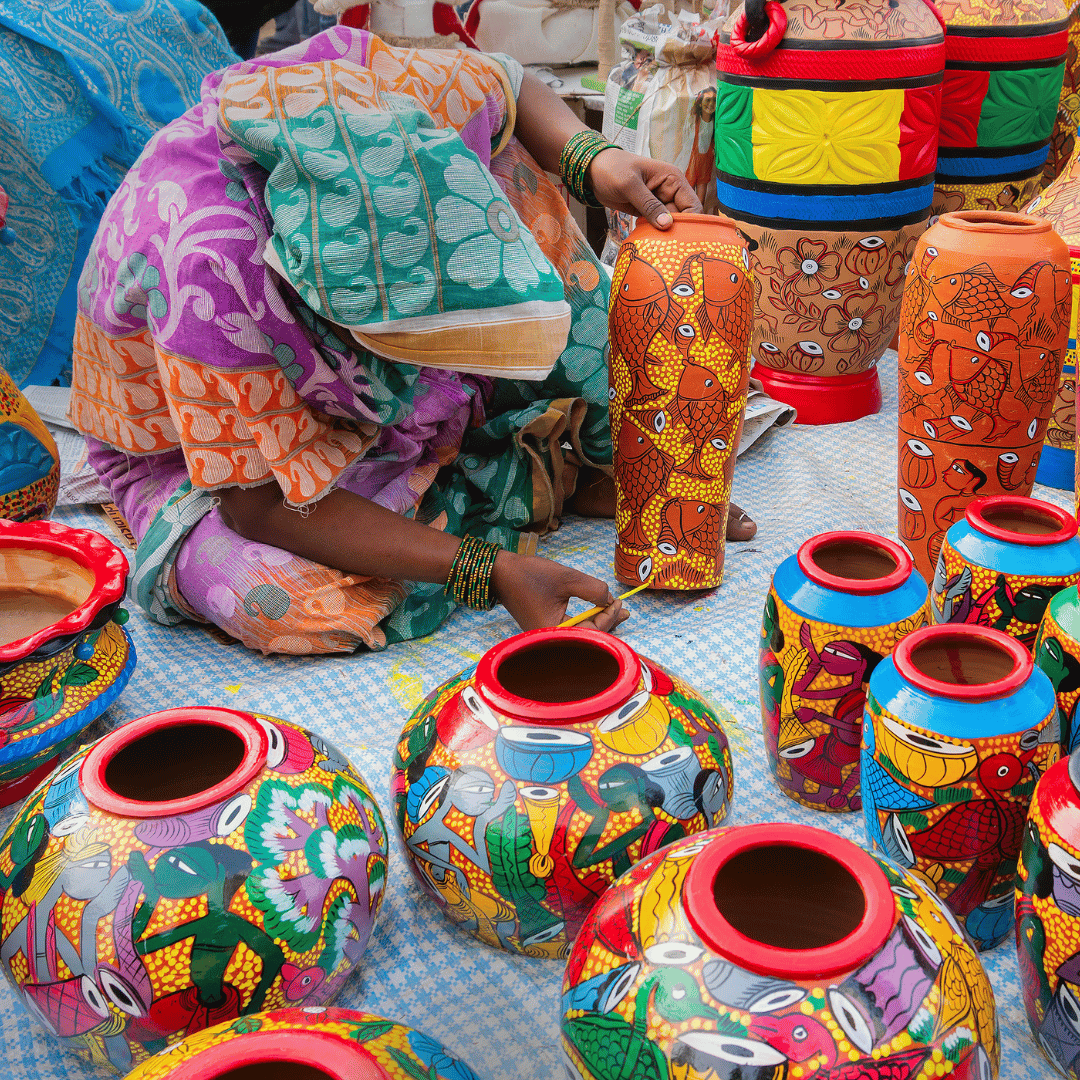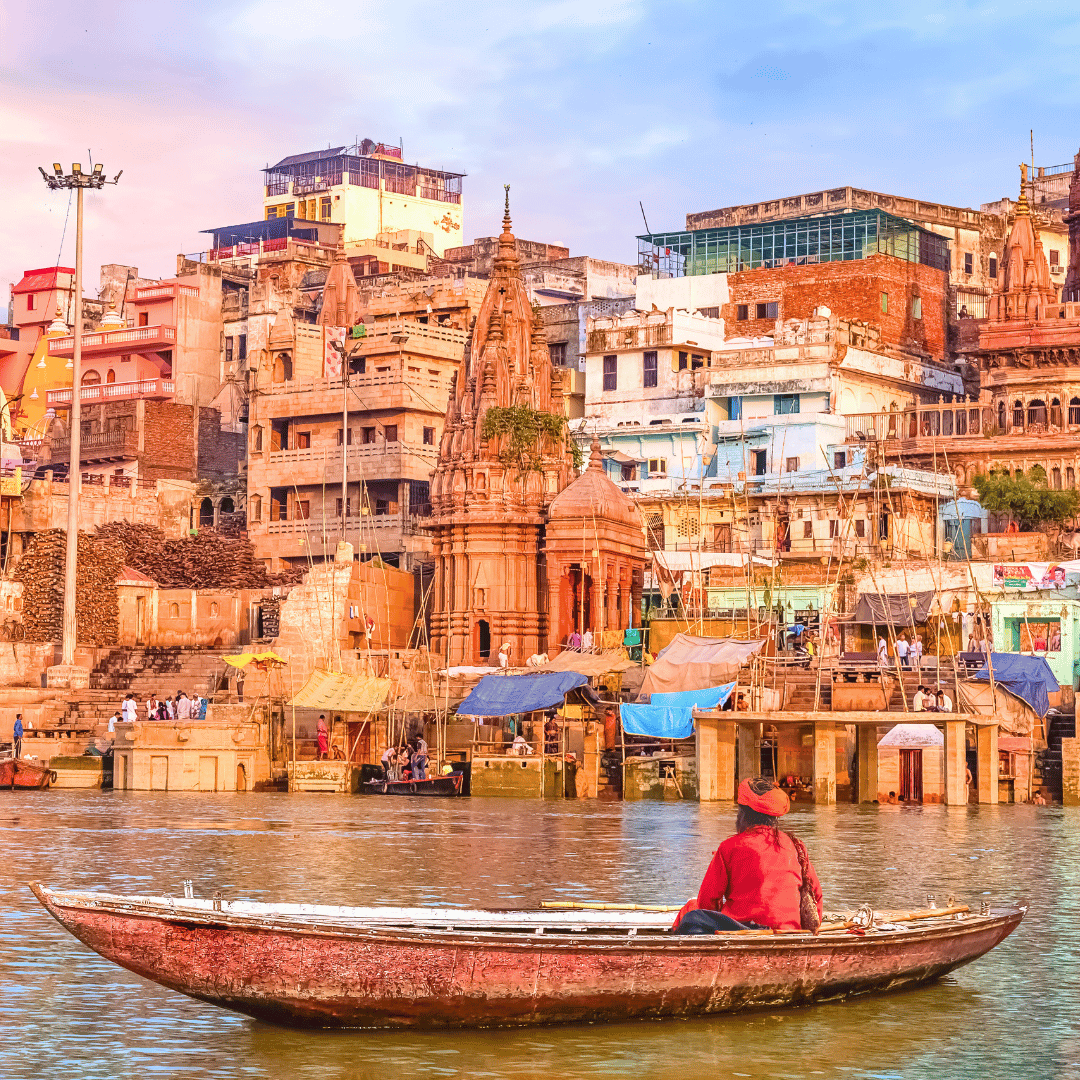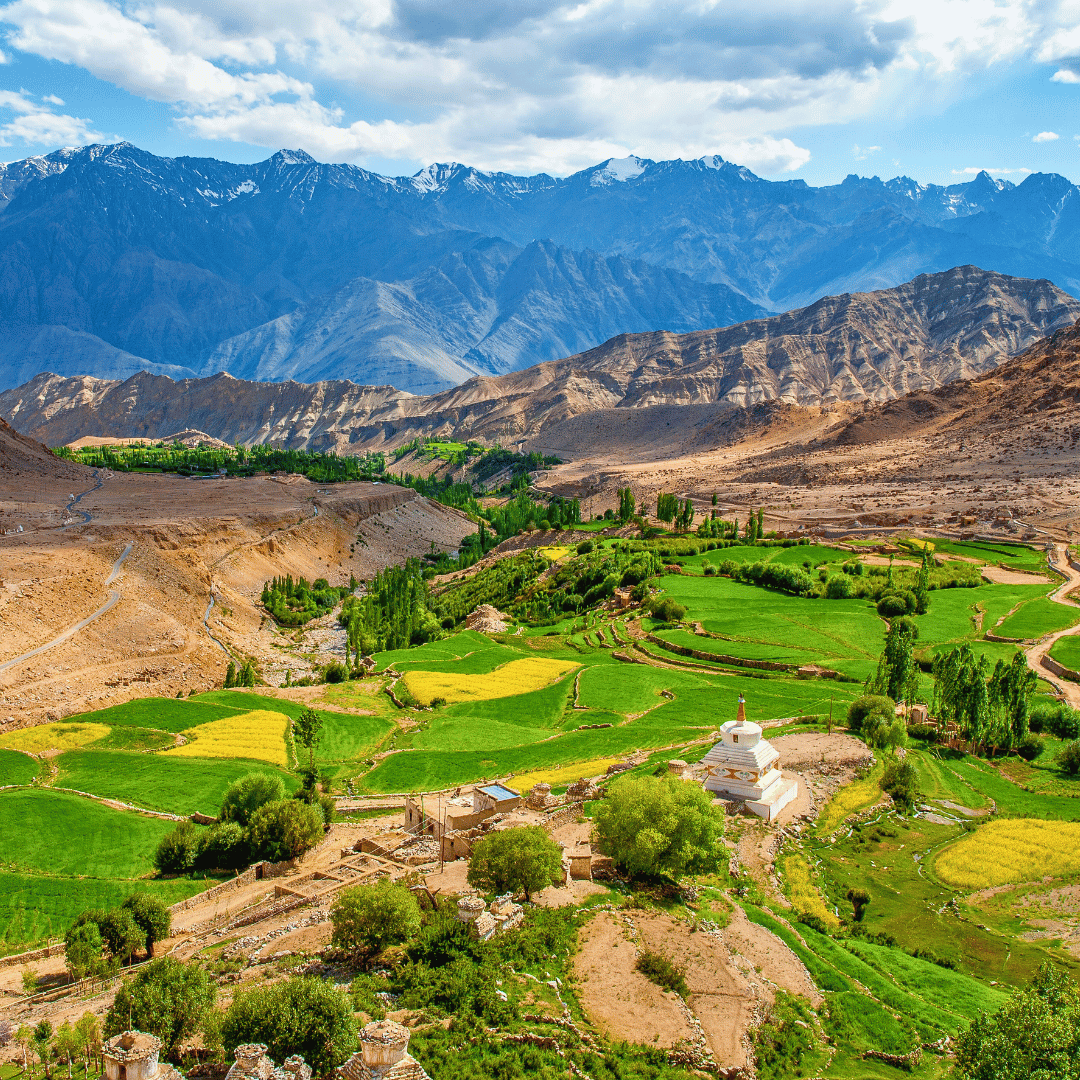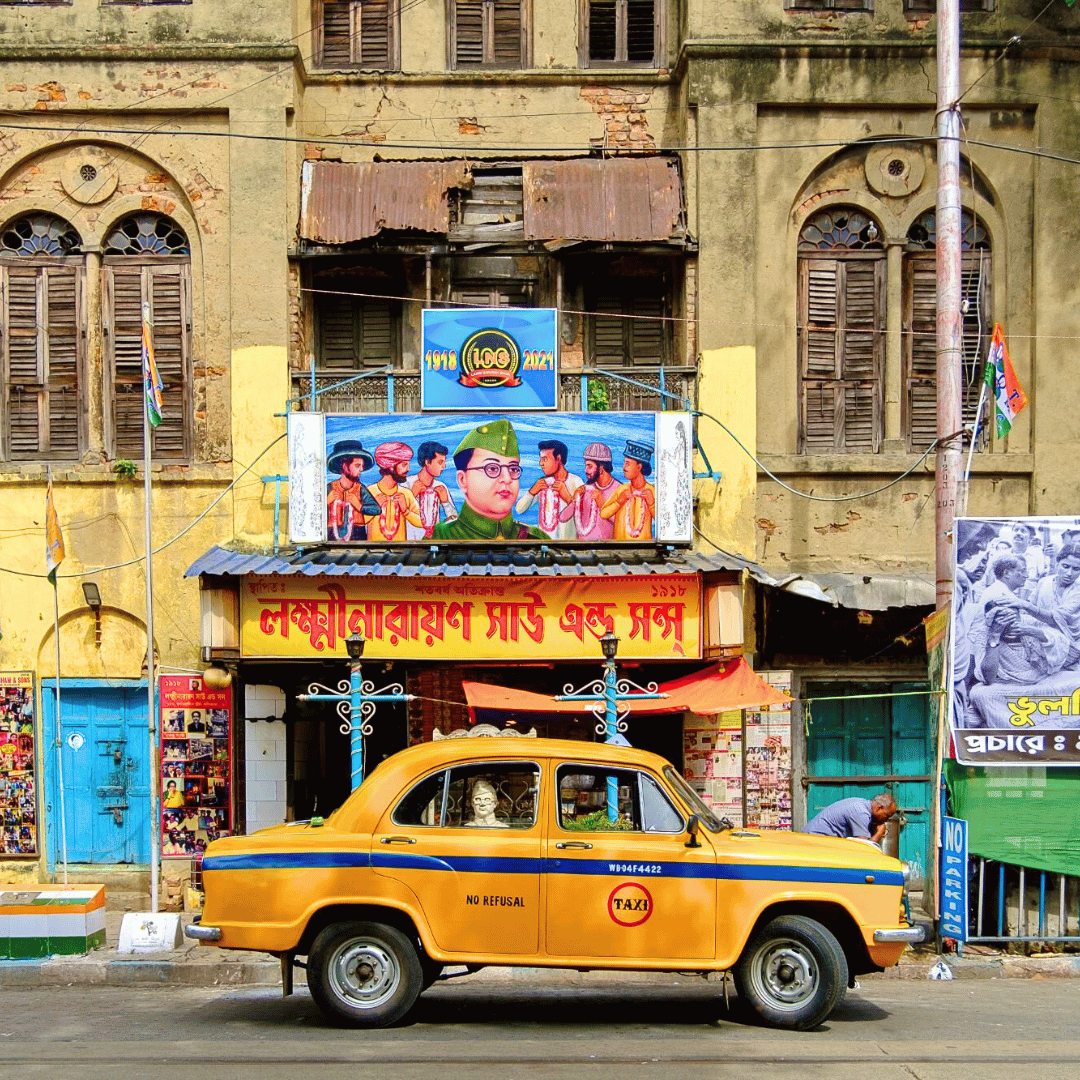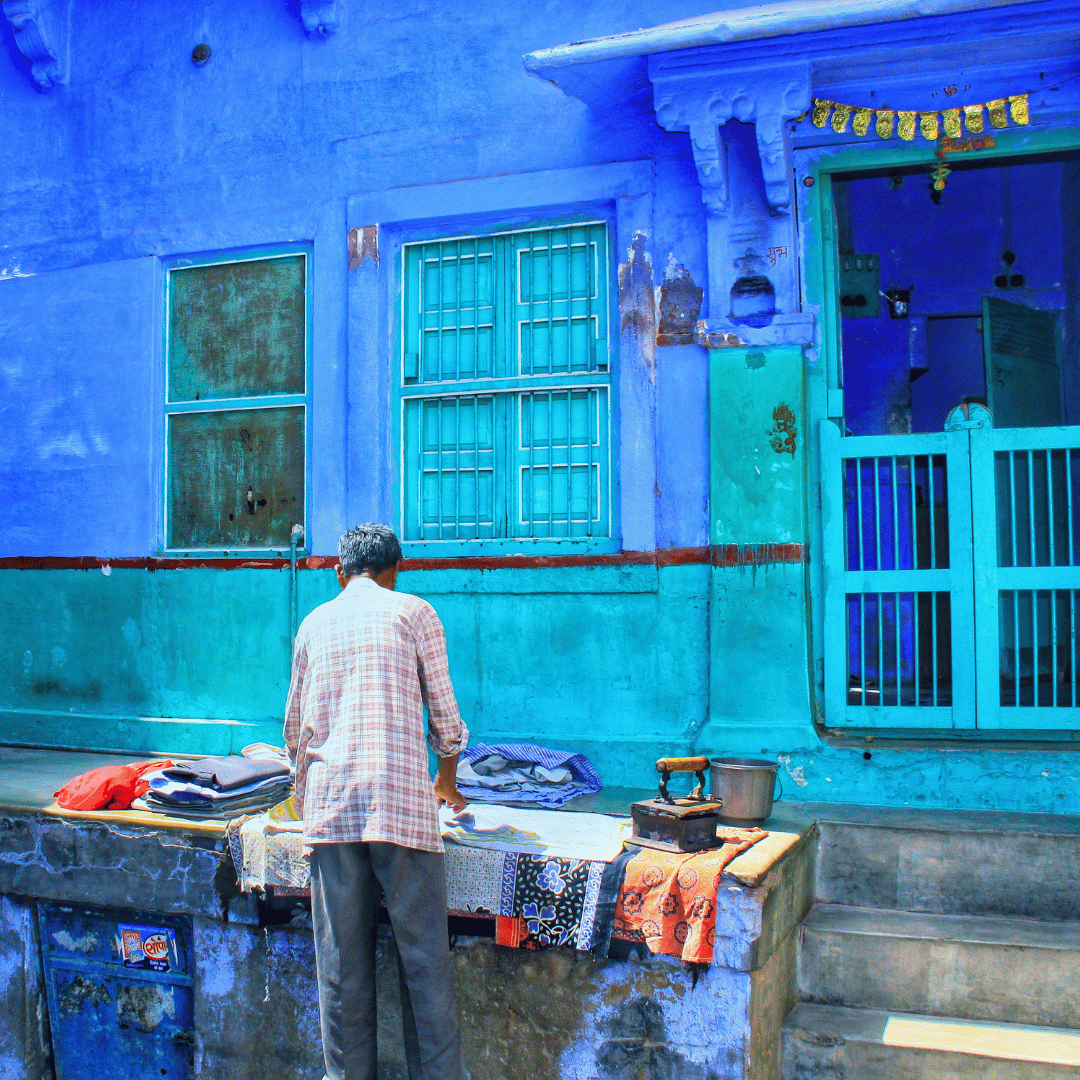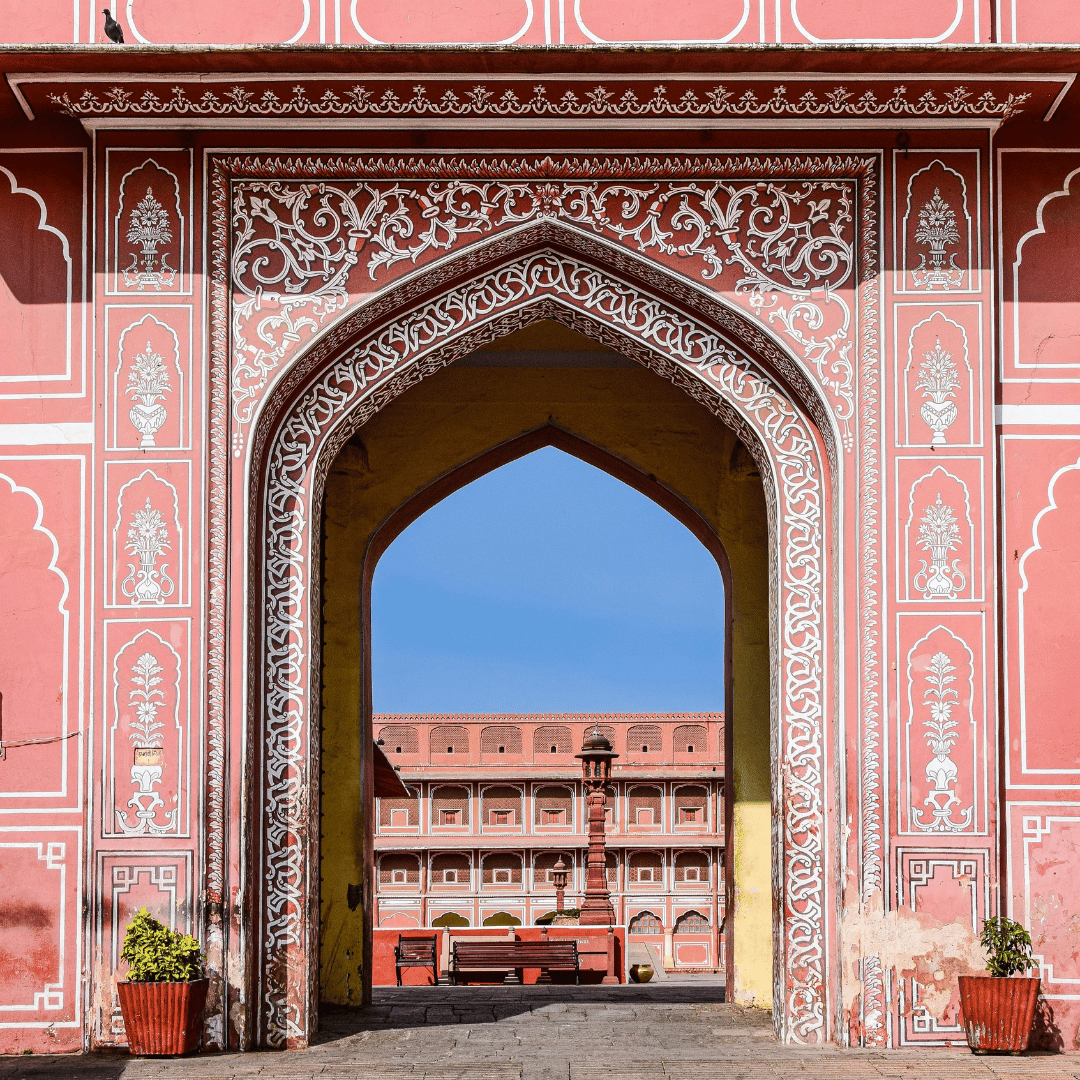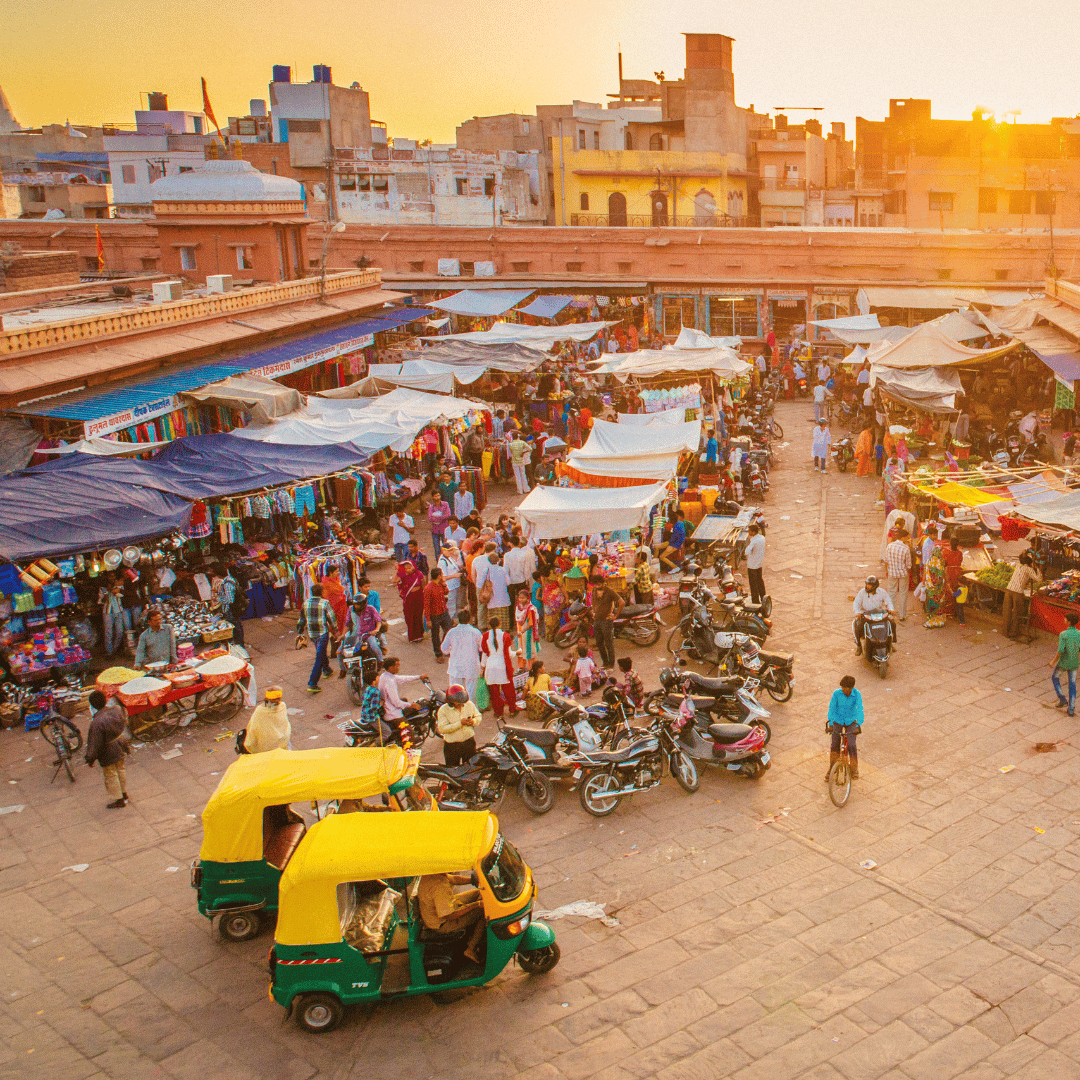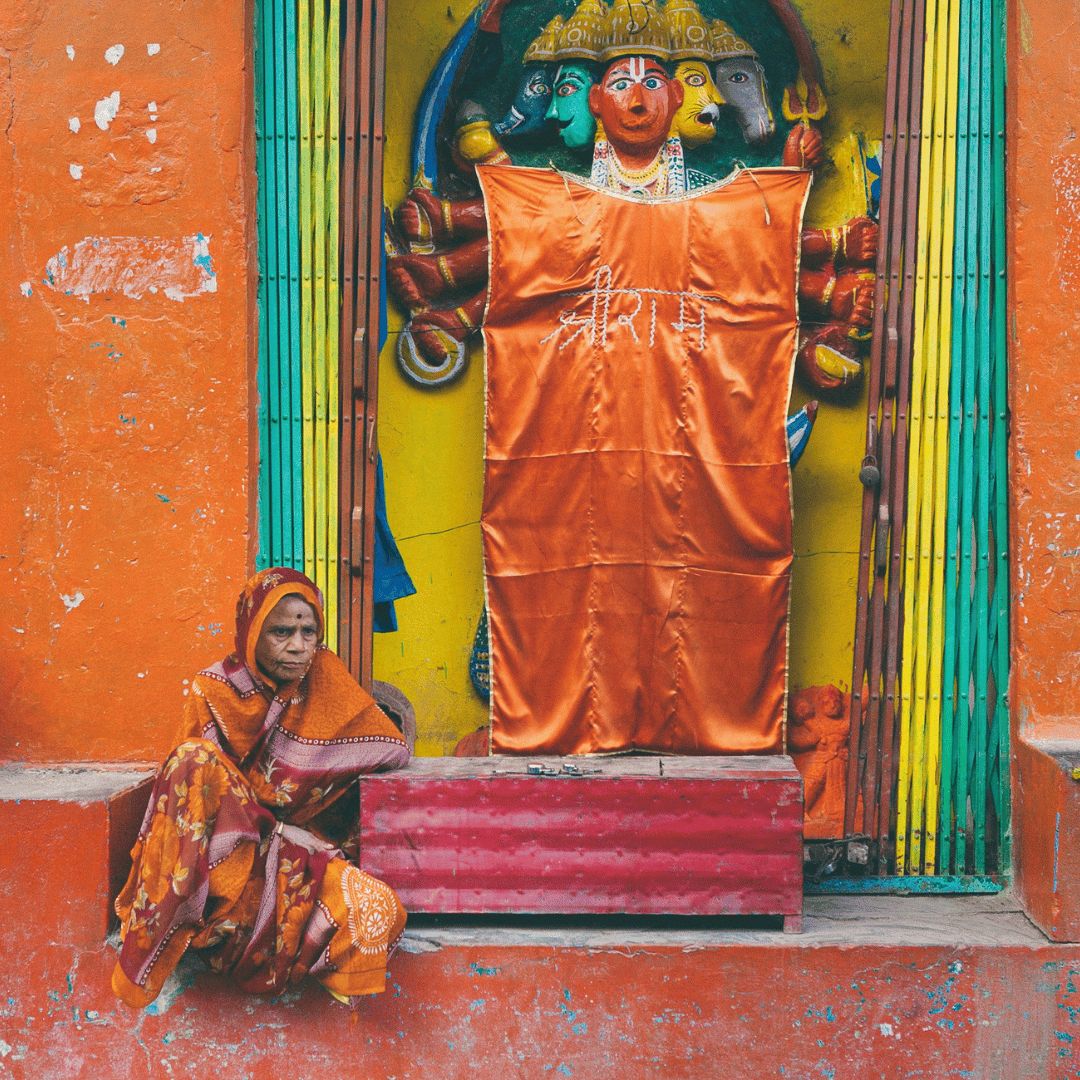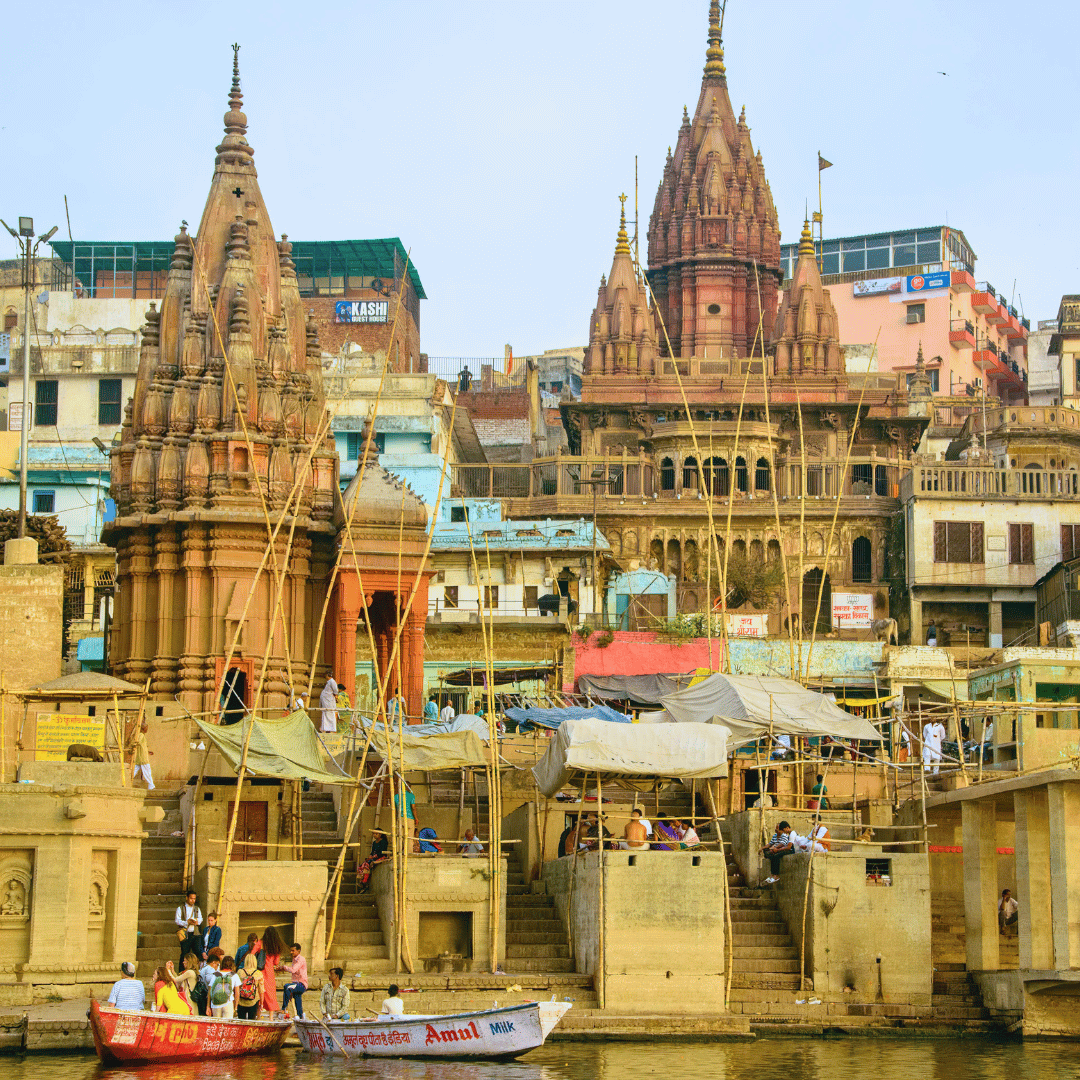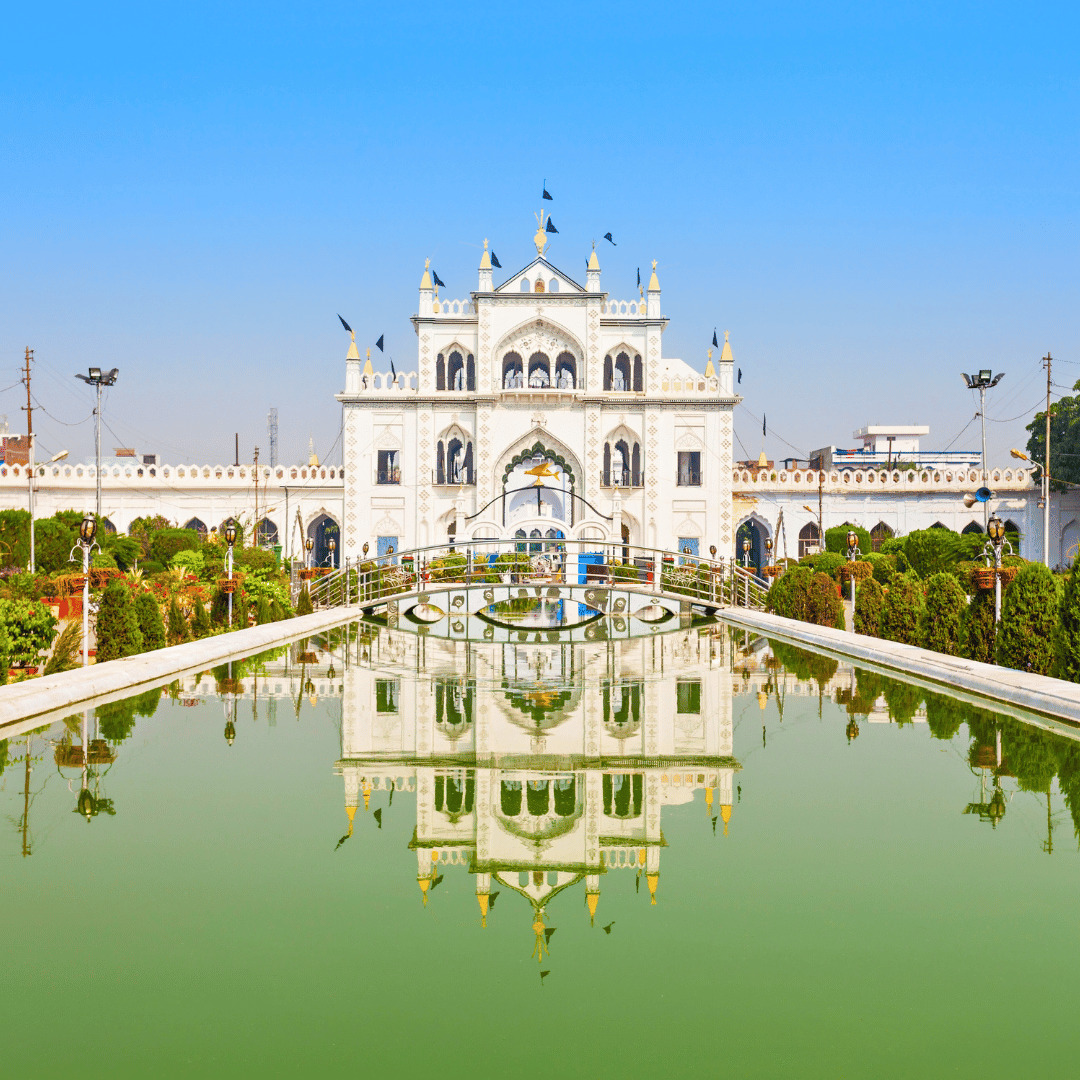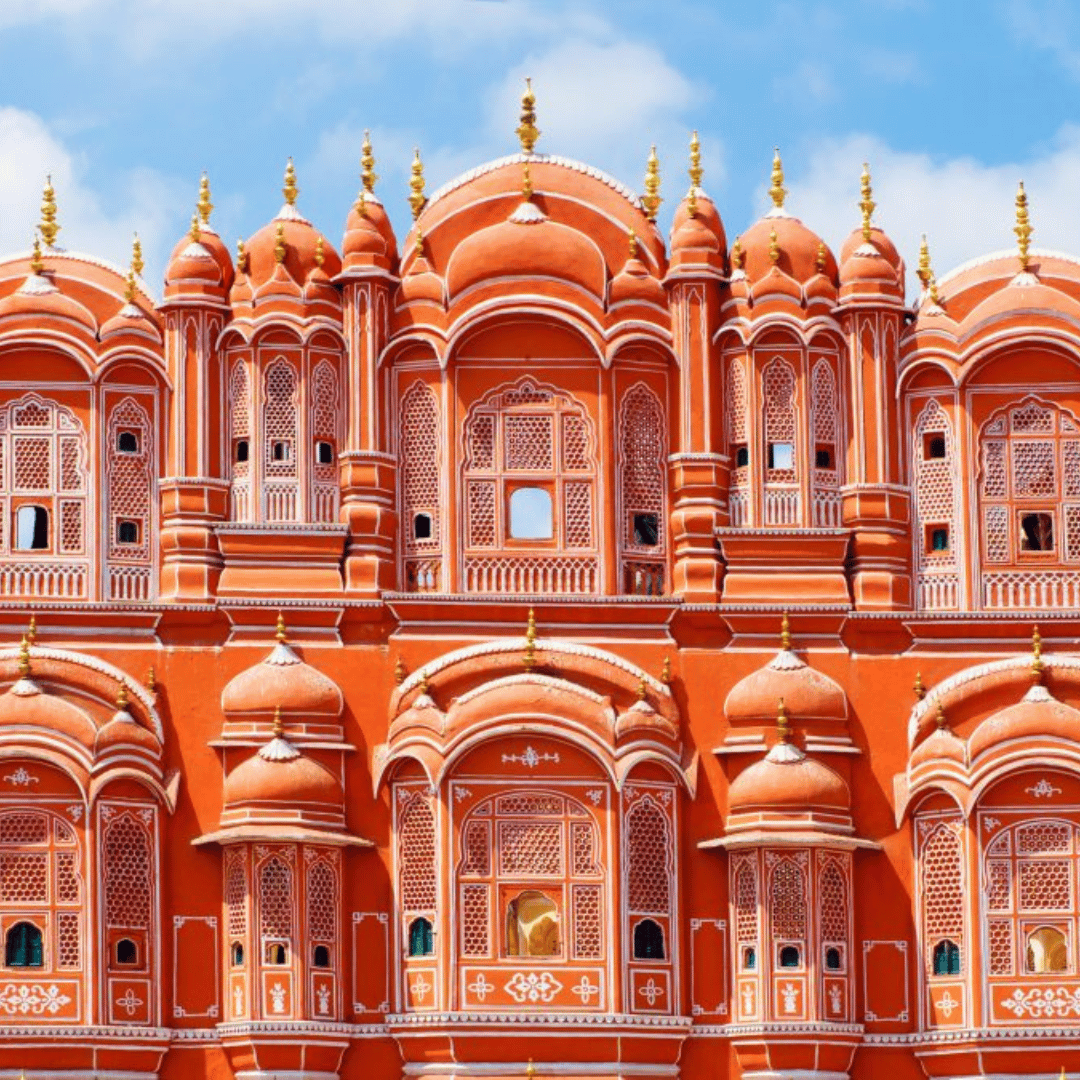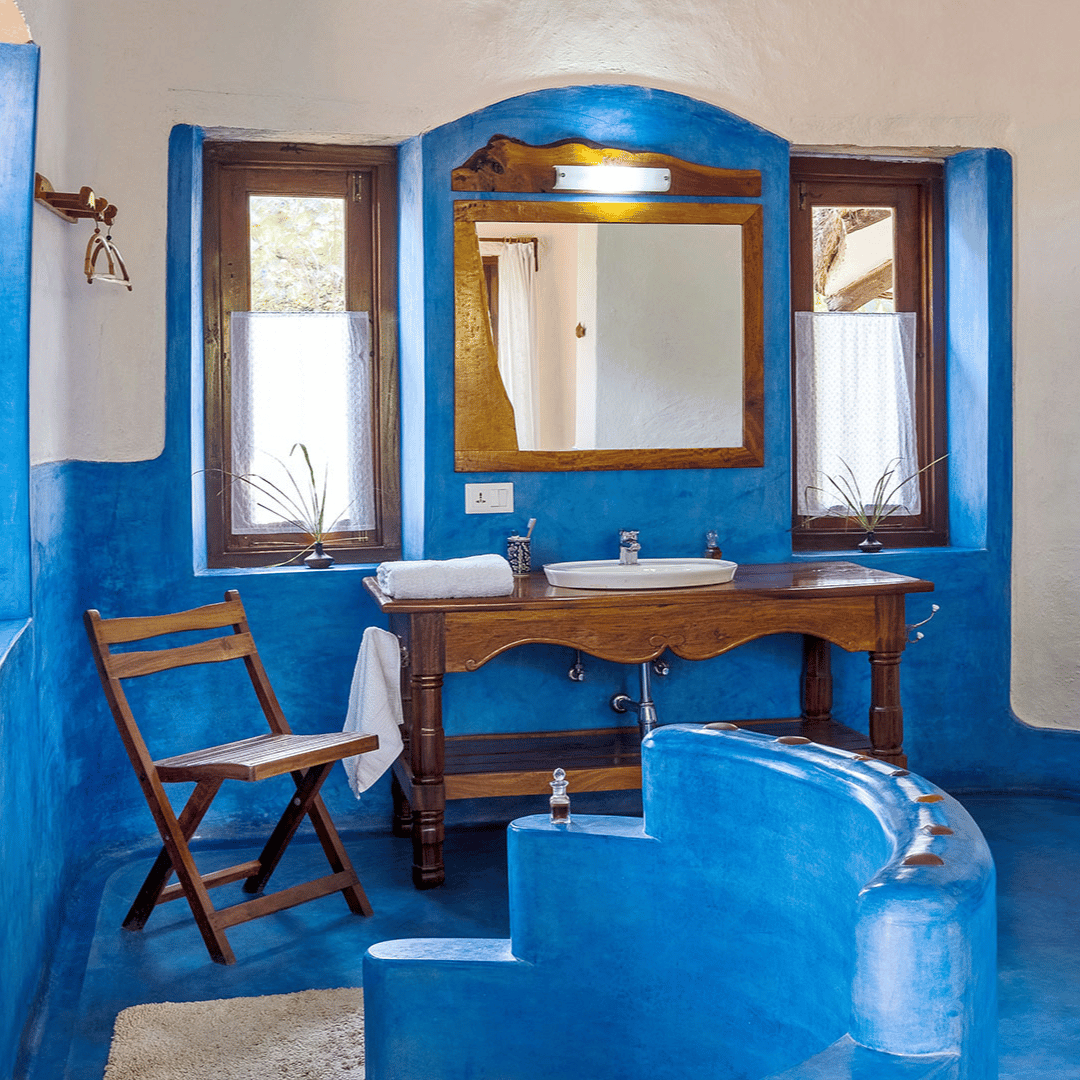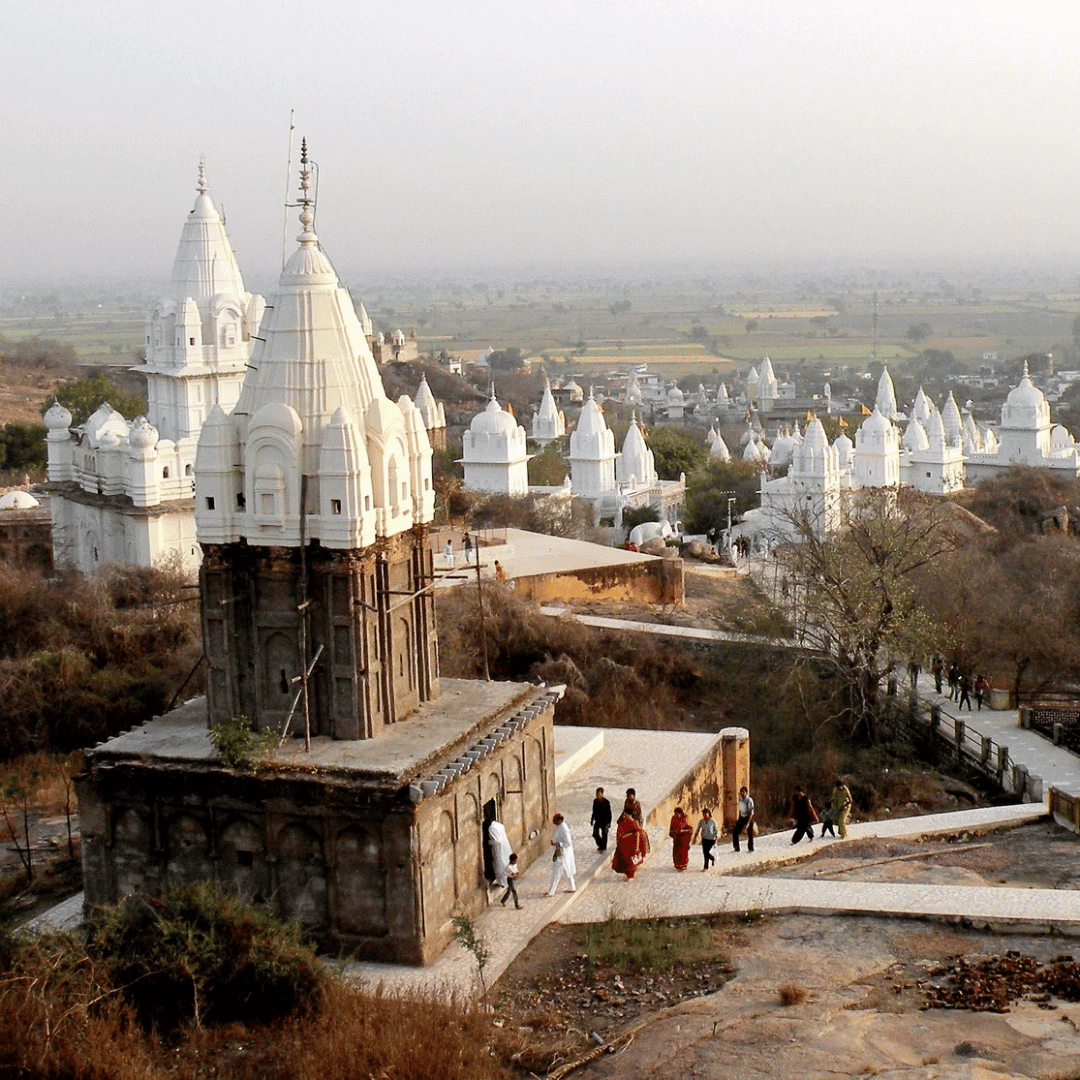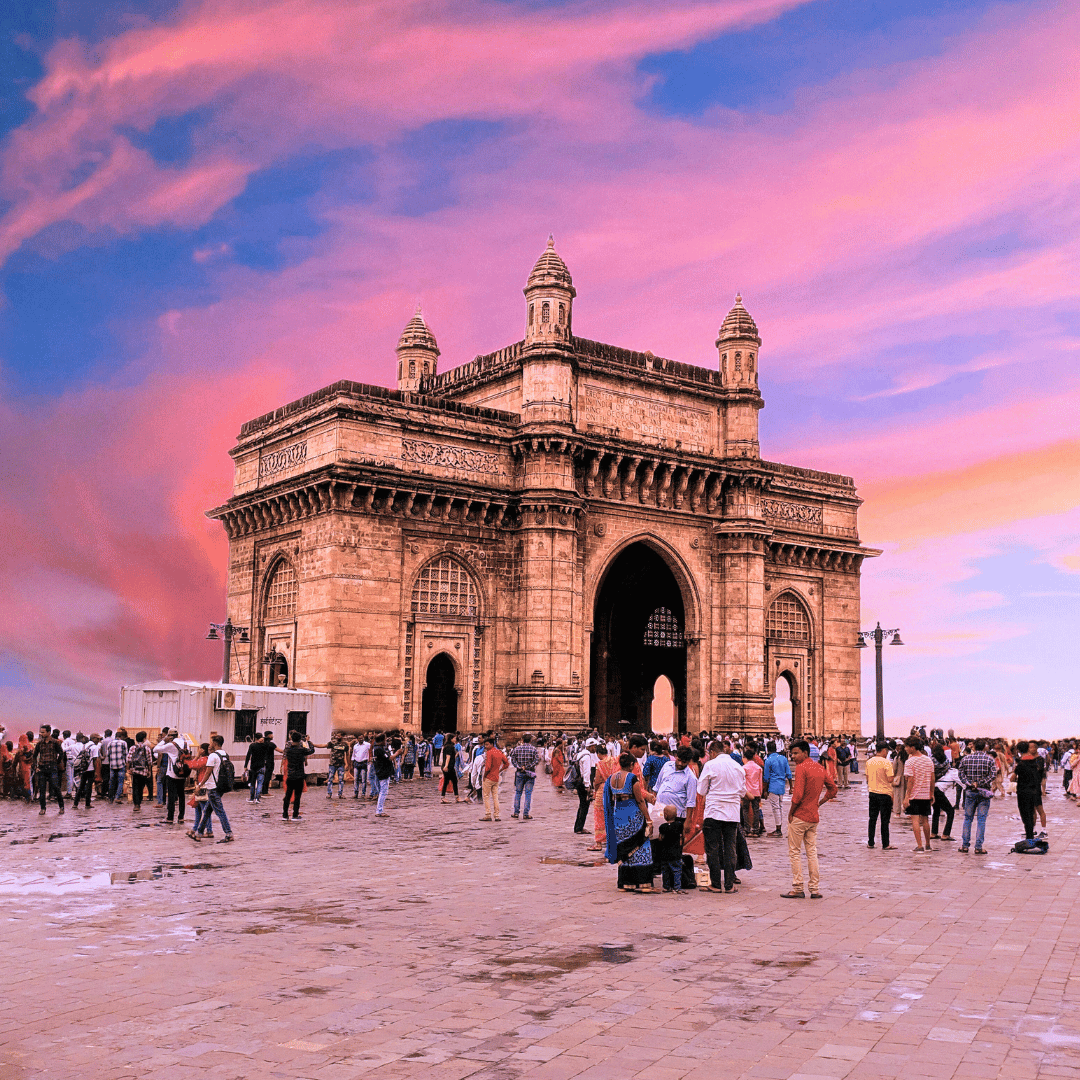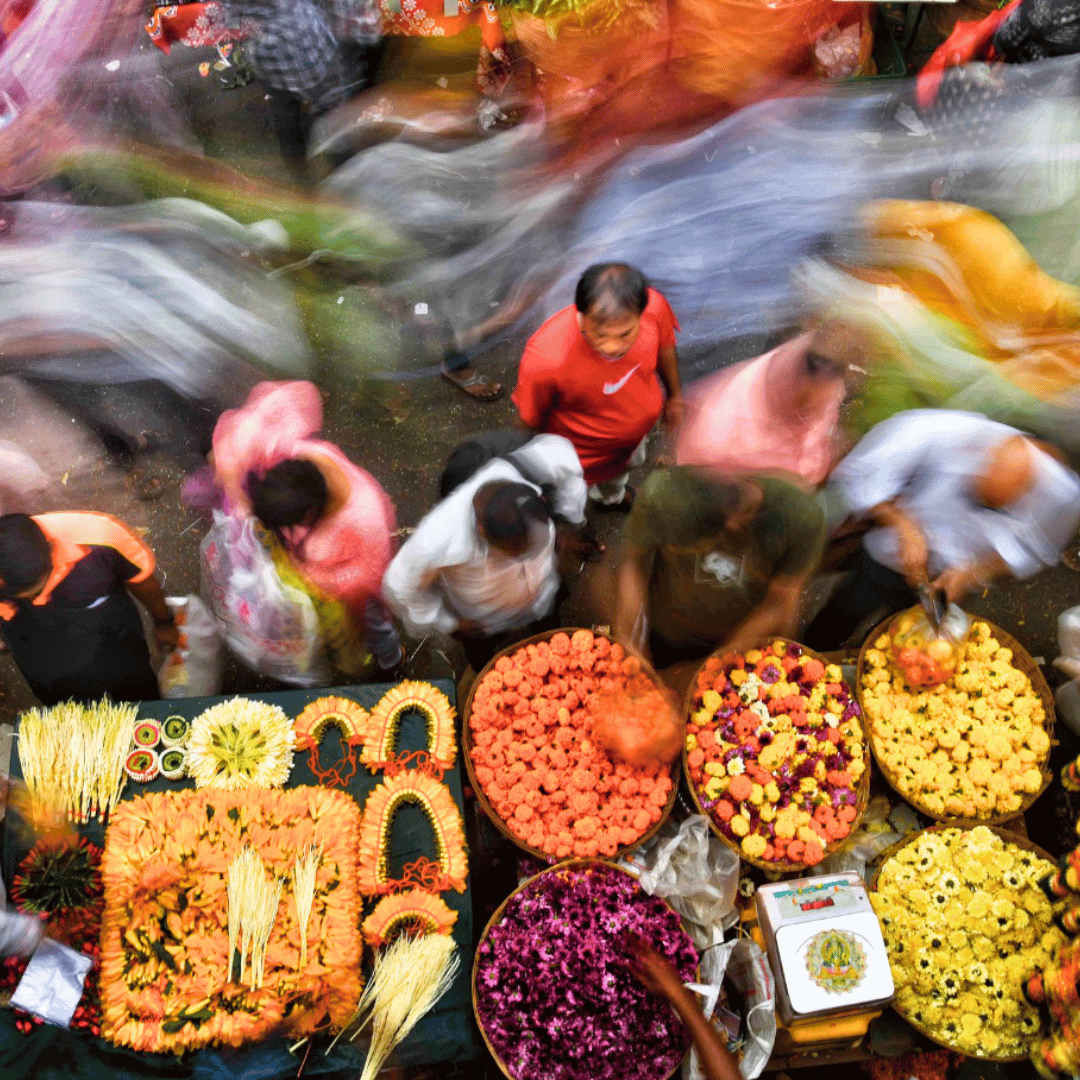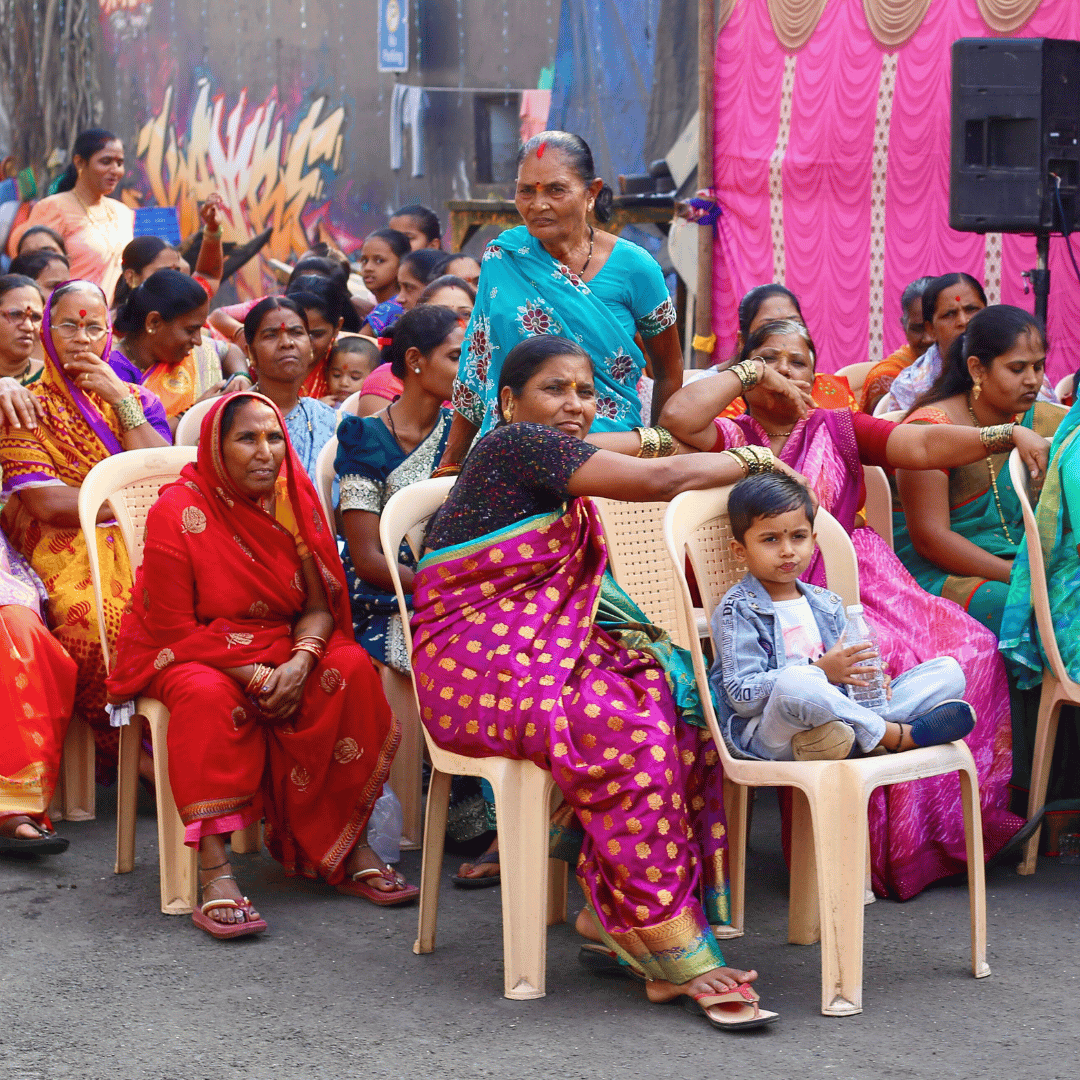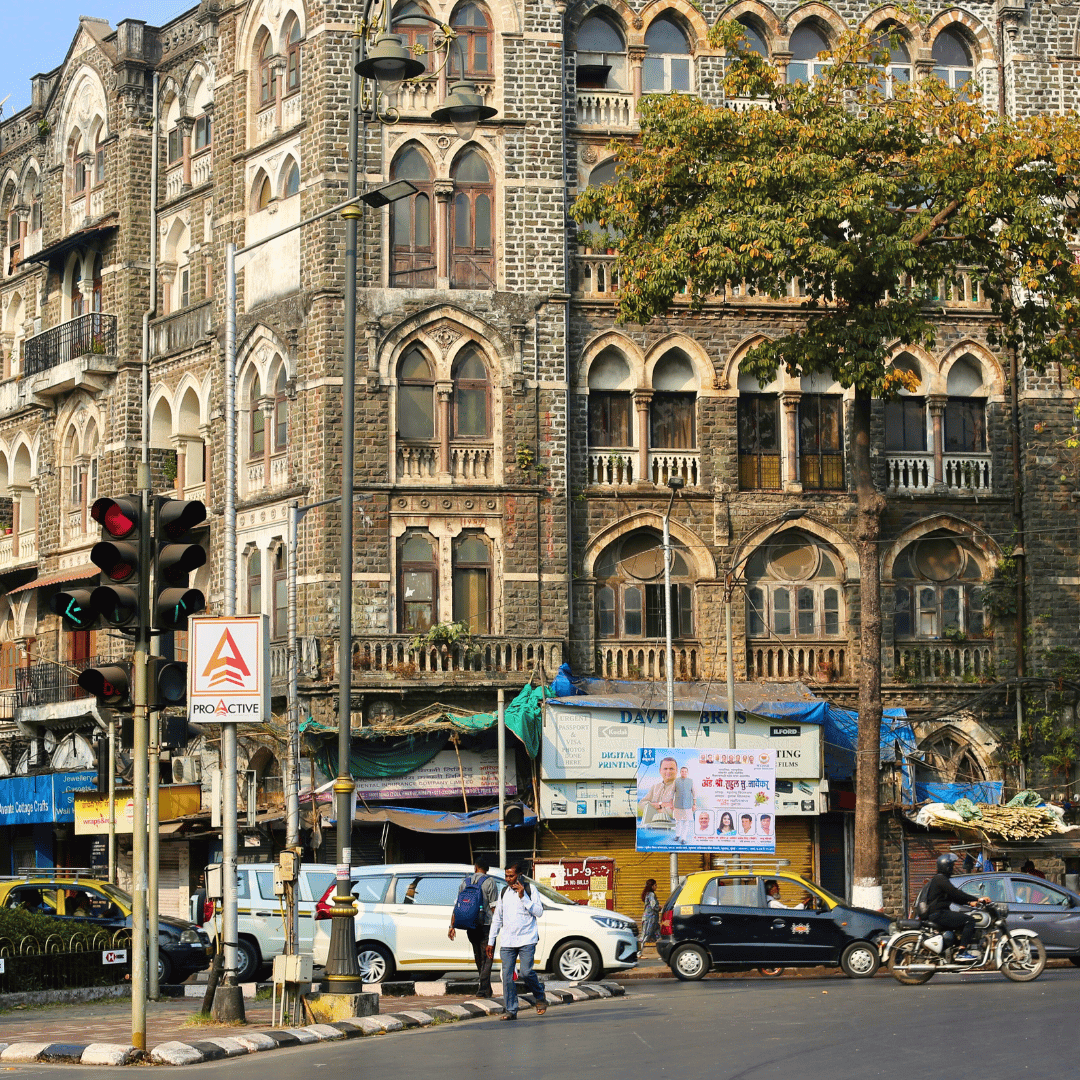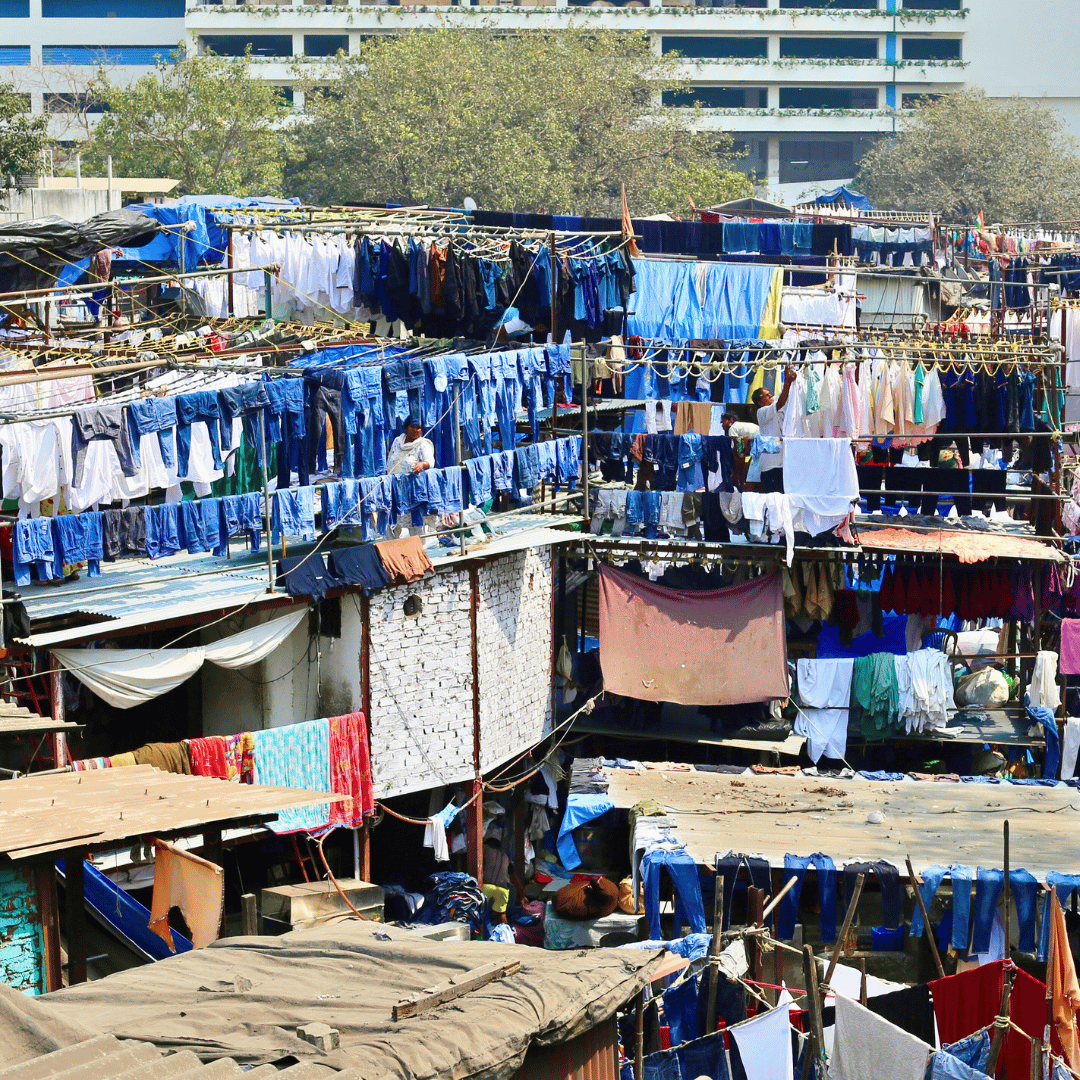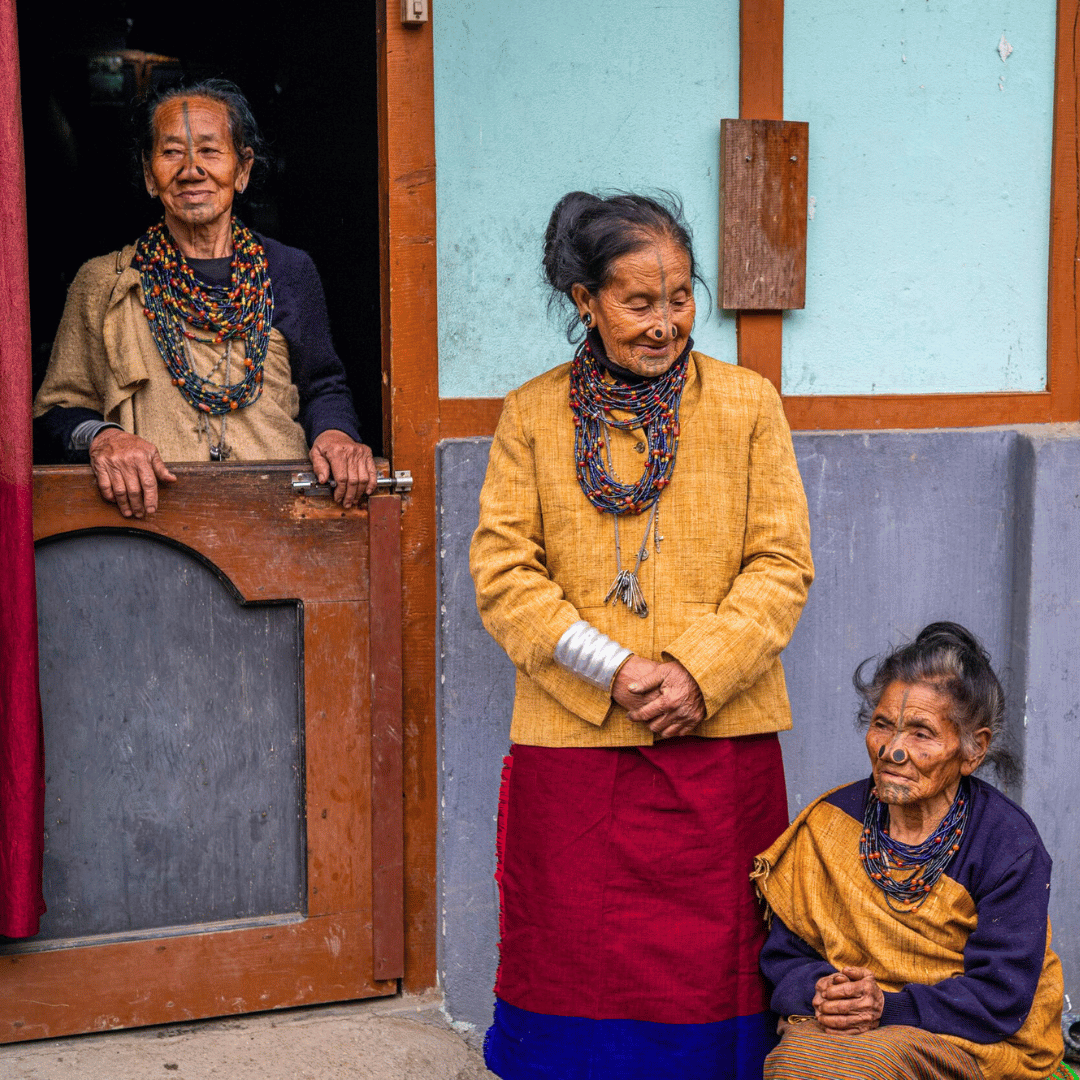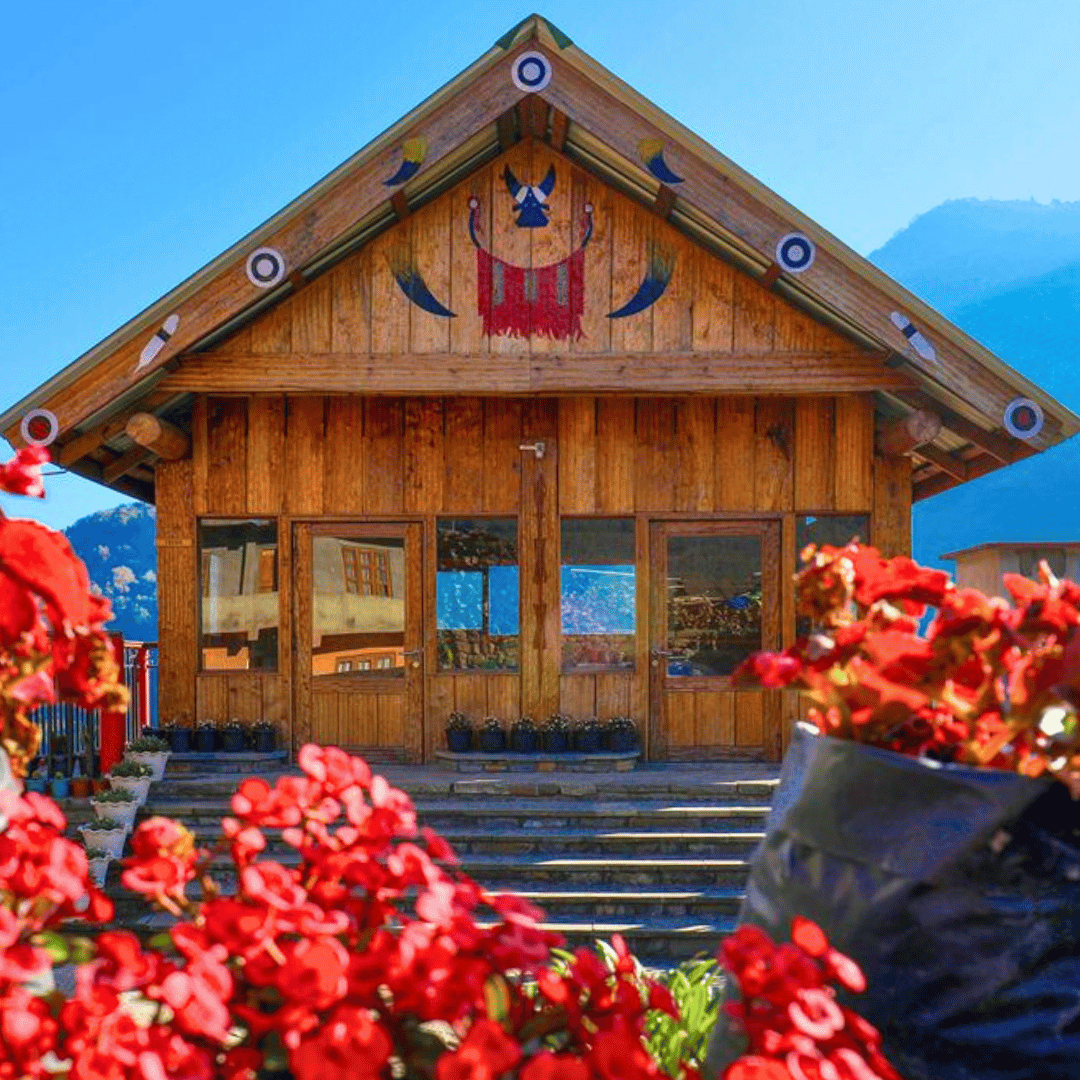India Tour Itinerary
-
Welcome to India! On arrival in Delhi, you’ll be welcomed by a local representative and transferred to your hotel for an overnight stay. As India’s capital and one of its most historically layered cities, Delhi is a fascinating blend of old and new. Ancient monuments stand alongside colonial-era architecture, bustling markets and modern developments, offering an introduction to the complexity and diversity that defines the country. Depending on your arrival time and energy levels, you might choose to rest at the hotel or take a short walk to absorb the atmosphere of the city. From the narrow lanes of Old Delhi filled with spice traders and street food vendors, to the broad, tree-lined avenues of New Delhi with their stately government buildings and cultural institutions, the city offers something at every turn. This first evening allows time to unwind and prepare for the journey ahead, with the comfort of knowing you’ve arrived in one of India’s most dynamic urban centres.
-
This morning, you'll transfer to the airport for your flight to Leh, a small town nestled high in the Indian Himalayan North and the capital of the Ladakh region - often referred to as the “Land of High Passes.” Upon arrival, you’ll be met and transferred to your hotel. The remainder of the day is free for rest and acclimatisation, as Leh sits at an altitude of over 3,500 metres. It's important to take it easy today to allow your body time to adjust to the thinner air.
Leh is located on the western edge of the Tibetan Plateau, bordered by the towering Karakoram range to the north and the Great Himalayas to the south. Its isolation has helped preserve a distinct culture and landscape, and it's often called “Little Tibet” due to the strong influence of Tibetan Buddhism. The region is sparsely populated, with stark but breathtaking scenery - barren mountains, dramatic valleys and centuries-old monasteries clinging to cliffsides.
In the late afternoon, you’ll visit the Shanti Stupa, a striking white-domed monument built by a Japanese Buddhist organisation as a symbol of peace and to mark 2,500 years of Buddhism. Perched on a hilltop above the town, it offers sweeping views of the surrounding mountains and valleys. Inaugurated by His Holiness the Dalai Lama in 1985, the stupa has become both a spiritual site and a popular vantage point.
Following your visit to Shanti Stupa, take a stroll through Leh’s central market. While still a small town, Leh has a lively atmosphere, especially in the warmer months, with Kashmiri traders selling handicrafts, pashmina shawls, jewellery and local wares. The compact layout of the town makes it easy to explore on foot, and this gentle walk is a perfect way to end your first day in Ladakh.
-
This morning, set out to explore some of Ladakh’s most important monasteries - Hemis, Shey and Thiksey - followed by a walk through the village of Stok and a visit to the historic Stok Palace.
Hemis Monastery, a Tibetan Buddhist monastery established in 1630 during the reign of Sengge Namgyal, is the largest and wealthiest in central Ladakh. It gained prominence under the Namgyal dynasty and is home to a remarkable three-storey high thangka - an embroidered scroll painting adorned with pearls and semi-precious stones. This prized artwork is only unfurled once every twelve years, drawing pilgrims and visitors from across the region.
Continue on to Shey, the former capital of Ladakh. Built in 1655 by King Deldan Namgyal, the Shey Palace was once the royal family’s summer residence. Within the palace complex is Shey Monastery, home to a grand seated statue of Shakyamuni Buddha. Made of copper and gilded in gold, the 12-metre-high statue spans three floors and is surrounded by vivid murals of Buddhist deities, making it a striking feature of Ladakh’s spiritual heritage.
Next is Thiksey Monastery, a 15th-century gompa belonging to the Gelugpa (Yellow Hat) sect of Tibetan Buddhism. Perched on a hill, this 12-storey monastery is often compared to the Potala Palace in Lhasa due to its architectural layout. It houses a wide array of Buddhist art, including thangkas, statues, stupas and wall paintings. A key feature is the modern Maitreya Temple, built in honour of the 14th Dalai Lama’s visit in 1970, which contains a 15-metre-high statue of Maitreya Buddha – one of the tallest in Ladakh.
Later in the day, visit the village of Stok and its palace, which has been the residence of the Namgyal royal family since 1843. The palace houses a museum showcasing the history and cultural heritage of the Ladakhi royals. On display are intricate thangkas painted using natural pigments from crushed gemstones, ceremonial attire and jewellery, weapons, and Buddhist artefacts - including the distinctive peraks, or traditional headdresses, decorated with turquoise, lapis lazuli, coral and gold.
This evening, gain deeper insight into the spiritual traditions of the region with a special lecture on Buddhism delivered by a senior monk (Khempo), offering context and understanding to the teachings that shape daily life in Ladakh.
-
Early this morning, you may choose to return to Thiksey Monastery to witness the monks' morning prayers - a peaceful and moving experience as chants echo through the halls of this centuries-old gompa. Afterwards, return to your hotel for breakfast and prepare for a day of scenic travel and exploration.
Later in the morning, set off on a drive through Ladakh’s dramatic high-altitude terrain. The road winds through narrow mountain passes, with sheer drops into deep gorges and sweeping views of jagged, snow-capped peaks. This journey takes you to some of Ladakh’s most significant and visually striking monastic sites: Alchi, Likir and Basgo.
Perched on the banks of the Indus River and framed by stark, barren hills, Alchi is often described as the jewel of Ladakh’s monasteries. Established in the early 12th century, it was later abandoned as a functioning religious site, which unexpectedly helped preserve its remarkable 12th and 13th century murals. These paintings - among the oldest surviving in Ladakh - are celebrated for their unique Indo-Tibetan style and make Alchi an important destination for art and history enthusiasts alike.
From there, continue to Likir Monastery, which belongs to the Gelugpa (Yellow Hat) sect of Tibetan Buddhism. Founded by Tsongkhapa in the 11th century, Likir means “encircled by serpents” - a reference to the mythical naga spirits believed to protect the site. The monastery is home to a fine collection of thangkas, statues, and religious texts, and features a large outdoor statue of Maitreya Buddha that towers over the surrounding valley.
Your final stop is Basgo, once the capital of lower Ladakh and an important cultural and political centre during the 14th and 15th centuries. Built on a hill overlooking the ruins of the old town, Basgo Fort is an atmospheric complex known for its decaying walls and stunning 16th century murals. Its dramatic position and weathered beauty offer a glimpse into Ladakh’s regal and spiritual past.
At midday, enjoy a picnic lunch in a scenic location - perhaps beside the Indus River or overlooking a remote mountain valley - surrounded by Ladakh’s vast, haunting landscapes. It’s a chance to relax and take in the stillness before returning to your hotel later in the afternoon.
-
This morning, depart Leh and begin the scenic 4 hour drive to the Nubra Valley - a remote region in northern Ladakh often referred to as the “Valley of Flowers” due to its rare and fragile alpine blooms. The journey takes you over the legendary Khardung La Pass, which, at an elevation of 5,602 metres, is often cited as the highest motorable road in the world. The climb to the pass offers striking views of the surrounding peaks and valleys, with the stark beauty of the Himalayas on full display.
As you descend from the pass into Nubra, the landscape gradually shifts from high-altitude mountain terrain to more fertile valley floors, where small villages and green fields appear along the banks of the Shyok River. The drive takes around five hours, with plenty of opportunity to pause and take in the changing scenery along the way.
On arrival in Nubra, check in to your accommodation - typically a comfortable guesthouse or boutique camp nestled among the valley’s orchards and mountains. The rest of the afternoon is at leisure to relax, breathe in the crisp mountain air, or take a short walk through the local village to observe daily life in this remote part of India.
Later in the day, you’ll visit the sand dunes at Hundar, one of the more unusual features of the region. Here, amidst the high-altitude desert setting, you’ll have the chance to see and ride a double-humped Bactrian camel - a species once used along the ancient Silk Route and now mostly found in Central Asia and this pocket of Ladakh. The experience of camel riding through a stark, sandy landscape with snow-capped peaks in the distance is a curious and unforgettable contrast, unique to Nubra Valley.
-
Today you’ll set out to explore two significant monasteries in the Nubra Valley - Diskit and Samstangling - each offering insight into the spiritual and cultural life of this remote Himalayan region.
Diskit Monastery is perched dramatically on a hillside above the Shyok River, overlooking the village of the same name. Dating back to the 14th century, it is the oldest and largest monastery in the Nubra Valley and belongs to the Gelugpa, or Yellow Hat, sect of Tibetan Buddhism. The setting is as striking as the monastery itself, with sweeping views of the valley and surrounding mountains. Inside, you’ll find a statue of Maitreya Buddha in the main prayer hall, alongside a large ceremonial drum and vivid depictions of protective deities. Just outside the monastery is a massive 32-metre-high statue of Maitreya Buddha, gazing out across the valley - built in more recent years as a symbol of peace and protection for the region.
After exploring Diskit, continue to Samstangling Monastery, located near the village of Sumur. Unlike Diskit’s more dramatic position, Samstangling is nestled among green fields and willow trees, offering a peaceful and contemplative setting. Founded in 1841, the monastery is known for its serene atmosphere and beautifully maintained interiors. It houses an impressive collection of Buddhist scrolls, richly coloured murals and statues, some of which depict key figures from Buddhist cosmology and Ladakhi religious life.
These visits provide a deeper understanding of the role that monastic institutions continue to play in Ladakhi society - as places of worship, learning, and community gathering - and offer a quiet moment for reflection amid the stark yet beautiful landscapes of the valley.
-
Today, depart Nubra Valley for the return journey to Leh, once again crossing the high-altitude Khardung La Pass. The drive takes approximately five hours, retracing your route through the dramatic mountain landscapes that define Ladakh. As you ascend towards the pass, enjoy the sweeping views of snow-covered peaks and winding river valleys, before descending back into the familiar terrain of the Leh region.
On arrival in Leh, check in to your hotel and enjoy the remainder of the day at leisure. You might choose to simply relax at your accommodation, resting after the journey and soaking in the crisp mountain air. Alternatively, take the opportunity to explore more of the town. A gentle stroll through Leh’s Main Bazaar is a great way to experience the everyday rhythm of local life - with its wide footpaths, rows of small shops, and lively blend of Ladakhi, Tibetan and Kashmiri influences.
Venture down some of the side streets and alleys branching off from the main road, where you’ll find hidden cafés, local eateries and smaller artisan stalls. It’s a good place to sample traditional Ladakhi fare - such as thukpa (noodle soup), momos (dumplings), or butter tea - and to browse for locally made handicrafts. Look out for handwoven pashmina shawls, prayer flags, jewellery, and hand-carved wooden artefacts. Whether shopping, eating or simply observing, the town offers a welcoming and laid-back atmosphere - the perfect way to ease back into life in Leh before continuing your journey.
-
Early this morning, transfer to the airport for your flight to Delhi. On arrival in the capital, you’ll be met and assisted with a transfer to the railway station to board an afternoon train to Gangapur. The train journey offers a window into the vastness and variety of India’s landscapes, gradually giving way to the rural charm of eastern Rajasthan. Upon arrival in Gangapur, a driver will meet you at the station for the one-hour drive to Ramathra Fort.
Set in a quiet corner of rural Rajasthan, Ramathra Fort is a heritage property unlike many of its grander counterparts. What sets it apart is not extravagance, but its peaceful isolation and deep connection to the surrounding landscape. This small fort-palace has been sensitively restored and converted into a boutique hotel, with a warm, understated atmosphere and genuine hospitality. Perched on a low hill, the fort is surrounded by agricultural fields and a seasonal lake that draws a rich variety of birdlife.
The fort itself features a solid perimeter wall with crenellated parapets, and the ramparts provide sweeping views over the patchwork of farmlands, scattered villages and distant hills. Whether you're relaxing in a quiet courtyard, enjoying a cup of chai on the terrace, or walking along the fort walls at sunset, Ramathra offers a rare stillness - a pause in the journey and a chance to experience rural Rajasthan in its most genuine form.
-
Today is yours to enjoy at your own pace. You may choose to spend the day at leisure, relaxing within the peaceful surrounds of Ramathra Fort, or take part in a range of activities and excursions offered by the hotel - each designed to immerse you in the natural beauty and cultural heritage of the region.
One of the highlights nearby is Kalisil Lake, a serene and scenic body of water just below the fort. The lake attracts a wide variety of birdlife, particularly during the cooler months when migratory species such as ducks, storks and cormorants arrive in large numbers. Local waterfowl can be spotted throughout the year, making it a rewarding destination for birdwatchers. A small two- to three-seater boat, complete with paddles and life vests, is available for hire - either with a guide or for self-use - allowing you to quietly explore the lake, search for signs of crocodile activity, and enjoy close-up views of birds feeding along the shoreline.
For those seeking more adventure, jeep safaris are available from the fort. These excursions take you across the rugged terrain of the Daang Plateau, a dramatic stretch of land that connects the Chambal Valley to the forests near Ranthambhore National Park (home of the elusive Bengal tiger). The landscape here is varied and often untouched, with the potential to spot wildlife such as antelope, jackals and a wide range of bird species. Along the way, you may visit lesser-known but spectacular sites including the ancient Utgir Fort, remote cave temples hidden in the hills, and the scenic Chuaki Gorge - all rich in history and natural beauty.
Whether you choose to explore or simply take in the views from the fort’s ramparts, a stay at Ramathra Fort offers a rare opportunity to experience Rajasthan beyond the usual tourist routes.
-
Today is yours to enjoy as you please, with the option to simply relax and soak in the peaceful atmosphere of Ramathra Fort or explore the surrounding area at your own pace.
One of the most rewarding ways to engage with the local community is by taking a guided walking tour of Ramthara village. This small, unassuming hamlet is home to a community of farmers and herders, and remains untouched by commercial tourism. As you stroll through the narrow lanes, you’ll encounter mud-brick homes, cattle enclosures, vegetable plots and daily scenes of rural life - from women drawing water at the communal well to children walking to school or elders gathered beneath shady trees for a chat.
The village is dotted with small shrines and temples, offering a quiet insight into the spiritual life of its residents. Among these, the Ganesh Mandir and Shiva Mandir stand out for their importance to the local community. Modest in size, these temples nonetheless play a central role in village life, and visits here provide an opportunity to observe simple rituals, offerings and perhaps a conversation with the temple caretaker or a passing devotee. It’s an authentic encounter with everyday religious practice far from the crowds.
Whether you choose to explore, meet the locals, or take it slow within the walls of the fort, the day offers a deeper appreciation of the rhythm of rural Rajasthan.
-
This morning, depart Ramthara for the one-hour drive to Gangapur railway station, where you’ll board a train bound for Delhi. Sit back and enjoy the changing scenery as you travel through the rural heart of Rajasthan back to the capital. On arrival in Delhi, you’ll be met at the station and transferred to the airport for your flight to Varanasi.
Varanasi, also known as Kashi - the “City of Light” - is one of the world’s oldest continuously inhabited cities and remains one of Hinduism’s most sacred places. Situated on the western banks of the Ganges River, the city rises from a series of ghats - long stone steps leading down to the water - where daily rituals, ceremonies and spiritual practices unfold from dawn until nightfall. Each ghat is dedicated to Lord Shiva in the form of a linga, a symbolic stone structure that represents the god’s energy and presence.
For centuries, pilgrims have journeyed to Varanasi seeking purification and spiritual release, believing the Ganges to be amrita - the divine nectar of immortality. The river is viewed not just as water, but as a living goddess and sacred cleanser of sin. Here, the spiritual and the physical coexist in a profound way, from cremation ceremonies to quiet morning prayers, all centred around the river’s sacred flow.
Arriving in Varanasi is a sensory and cultural experience unlike any other in India. A place of deep devotion, intense colour and constant motion, it is a city where time seems to stand still, and where the rhythms of ancient tradition continue to shape daily life.
-
Begin your exploration of Varanasi with a dawn boat ride on the sacred Ganges, a deeply moving and unforgettable experience. As the first light of day breaks over the river, you’ll witness the ancient rhythms of life along the ghats: devotees immersing themselves in the holy waters, priests performing ritual prayers, and the sounds of bells and chants rising with the mist. The slow drift of the boat along the riverbank offers a rare, peaceful vantage point from which to observe one of India’s most spiritual daily rituals.
After the boat ride, continue with a guided walking tour through the narrow, winding laneways of Varanasi’s old town. This maze-like part of the city is alive with activity - pilgrims on their way to temples, local residents going about their routines, and vendors selling marigold garlands, brass vessels, silks and incense. Every corner seems to house a shrine or temple, and the air is thick with the scent of camphor and sandalwood. It’s a vibrant and sometimes overwhelming experience, but one that offers true insight into the devotional heart of the city.
In the afternoon, you’ll travel to nearby Sarnath - one of Buddhism’s holiest sites and the place where Gautama Buddha gave his first sermon more than 2,500 years ago, setting in motion the Wheel of Dharma. Once a great centre of Buddhist scholarship, Sarnath was home to thousands of monks and scholars during its peak. Although much of it now lies in ruins, the site remains a major pilgrimage destination. The centrepiece is the massive Dhamekh Stupa, built in the 5th century CE, standing 31 metres tall on a site believed to mark the exact spot of the Buddha’s first teachings. Nearby are the remains of the Dharmarajika Stupa, commissioned by Emperor Ashoka in the 3rd century BCE to enshrine relics of the Buddha. Scattered across the archaeological park are remnants of monasteries, shrines and a Bodhi Tree planted in 1931 - grown from a cutting of the tree under which the Buddha is said to have attained enlightenment.
Return to Varanasi in the evening for another special experience - a sunset boat ride to witness the Ganga Aarti, a nightly ritual performed at the main ghats. As darkness falls, saffron-robed priests line the riverbank, performing intricate fire rituals with large brass lamps, accompanied by rhythmic chants, conch shells and ringing bells. Thousands gather to watch and take part, with pilgrims lighting small candles placed on leaves and setting them afloat on the water. After witnessing this vibrant ceremony, your boat will move to a quieter stretch of the river, where you’ll enjoy a serene session of Indian classical music performed on board.
-
Spend the morning at leisure, with time to rest or take a final stroll along the ghats or laneways of Varanasi at your own pace. Later in the day, you’ll be transferred to the airport for your flight to Kolkata. On arrival, you’ll be met by a local representative and transferred to your hotel for check-in.
Kolkata, formerly known as Calcutta, began as a cluster of small fishing villages in the Gangetic delta. Its transformation began in the late 17th century with the arrival of the East India Company, and the city later rose to prominence as the capital of British India until 1911, when the seat of government was moved to New Delhi. Today, Kolkata is a dynamic metropolis of over 14 million people and serves as the commercial, cultural and intellectual hub of eastern India.
The city is known for its rich literary and artistic traditions, with a reputation for producing poets, filmmakers, writers and political thinkers. Its layered identity reflects a deep-rooted history of reform, revolution and cultural exchange. Kolkata is also home to a number of nationally significant institutions, including the Indian Museum – the oldest and largest in the country - the National Library, the Academy of Fine Arts, and the Asiatic Society, founded in 1784. It’s a city of contrasts, where colonial architecture sits beside vibrant markets, and where intellectual legacy meets the energy of daily life.
-
Begin your exploration of Kolkata this morning with a guided visit to several of the city’s most significant landmarks - the Victoria Memorial, the Botanical Gardens and the Mother House of the Missionaries of Charity.
The Victoria Memorial, one of Kolkata’s most iconic buildings, was constructed between 1906 and 1921 in memory of Queen Victoria. Built from gleaming white marble and designed in the Indo-Saracenic revivalist style, the structure blends classical British and Mughal architectural elements. Its central dome is crowned by the Angel of Victory, and around it are sculptures representing themes such as Art, Architecture, Justice and Charity. Inside, the museum features several galleries, including the Royal Gallery, the National Leaders Gallery, the Portrait Gallery, the Arms and Armoury Gallery and others, offering insight into India’s colonial past and its struggle for independence.
Next, visit the Botanical Gardens, located on the western bank of the Hooghly River. Established in 1787 by Colonel Robert Kyd of the East India Company, these gardens cover 109 hectares and are home to more than 12,000 plant species. The collection includes orchids, ferns, cacti, palms, bamboo and many rare and exotic plants. The highlight is the massive 200-year-old Banyan tree, believed to be the largest in the world by canopy coverage, stretching over 300 metres in circumference. The gardens offer a welcome contrast to the noise and bustle of the city and are an ideal place for a quiet wander through nature (though best avoided on Sundays when they can become crowded).
Continue on to the Missionaries of Charity, founded in 1950 by Mother Teresa. The organisation now operates numerous homes across Kolkata, including facilities for orphaned children, the elderly, the dying, those living with HIV/AIDS and leprosy, and schools for street children. The headquarters, known as the Mother House, is located on Bose Road. Here, you’ll have the chance to visit the simple chapel where Mother Teresa prayed, her tomb - now a place of quiet pilgrimage - and a small exhibition room that includes her personal belongings such as her sari, sandals and crucifix, along with letters and reflections that provide a glimpse into her life and work.
In the afternoon, take a walking tour through some of Kolkata’s oldest neighbourhoods - or paras - which tell the story of the city’s multicultural past. These tightly knit communities reflect the rich mix of migrant populations who settled in the city over centuries. Learn about the dwindling Parsi and Armenian communities, visit Kolkata’s Chinatown - once the heart of a thriving Chinese-Indian population - and trace the contributions of Muslim, Marwari, Bihari and Anglo-Indian groups. From temples and churches to mosques and markets, this walk offers a deeper understanding of the social fabric that makes Kolkata one of India’s most culturally diverse cities.
-
Start your morning with a traditional Chinese breakfast in the heart of Kolkata’s Chinatown, one of the last remaining in India. The Chinese community first settled in the city as early as the 1780s, bringing with them not only their craft and trade but also a distinctive culinary heritage that has since become part of Kolkata’s diverse food culture. Join locals and early risers as they gather at roadside stalls and family-run eateries. Watch entire families prepare and serve a variety of delicacies including tai pao (steamed buns), yeo teow (fried dough, sometimes filled with prawns or potato), as well as chicken and pork momos, soups and handmade noodles. It’s a lively and delicious way to start the day, and a reminder of the many cultural layers that make up the city.
After breakfast, head to Kumartuli, the potters’ quarter of Kolkata. Tucked away in the narrow lanes of north Kolkata, this neighbourhood is home to more than 600 families who specialise in clay idol making. Here, you’ll walk through a labyrinth of tiny workshops and open-air studios, where artisans sculpt elaborate images of Hindu deities - most notably the goddess Durga - from straw and clay. These idols are central to the grand Durga Puja celebrations held each year in the city. Meet some of the artists, observe their traditional techniques, and learn about their deep connection to the city’s cultural and religious identity.
If time permits, you might consider a full-day excursion to Bishnupur, located around 150 kilometres from Kolkata. Once the seat of the Malla kings, Bishnupur is famous for its exquisite terracotta temples, built between the 17th and 18th centuries. These temples are decorated with richly detailed panels that depict scenes from Hindu epics and everyday life, showcasing the craftsmanship of the region’s artisans. Bishnupur is also known for its music, textiles and traditional Baluchari saris, making it a worthwhile visit for anyone interested in Bengal’s artistic traditions.
Later in the day, return to Kolkata for a walking tour that traces the city’s colonial past. Begin in Dalhousie Square, surrounded by grand buildings from the British era, including the General Post Office, Writer’s Building and St John’s Church. This area was once the administrative and commercial heart of the British East India Company and remains a striking reminder of the colonial presence in India. From here, dive into the vibrant energy of the city’s bazaars - explore Sovabazaar, known for its deep roots in Bengali tradition, as well as the bustling areas of Chowringhee, New Market and Park Street. Each offers a different perspective of urban life in Kolkata, from historical charm to modern chaos.
To end the day on a more personal note, you may wish to join a local Bengali family for tea or a home-cooked meal. This is a wonderful opportunity to engage in relaxed conversation and hear local perspectives on life in Kolkata, its changing culture, and anything else that interests you - an intimate and authentic way to close your experience of the city.
-
Begin your day with a visit to Kalighat, one of Kolkata’s most revered and powerful spiritual sites. This temple is dedicated to the goddess Kali, the patron deity of the city, and draws thousands of worshippers and visitors daily. Unlike many Hindu deities who are depicted with serene or graceful appearances, Kali’s form is fierce and confronting - she is shown with four arms, three eyes, a necklace of skulls, and a bright red tongue protruding from her mouth. Her image challenges conventional notions of beauty and divinity. In Hindu belief, Kali is the destroyer of evil, the embodiment of feminine power, and the force behind both destruction and renewal. Kalighat Temple, a major pilgrimage site, is steeped in centuries of devotion and mythology, and visiting it offers a powerful insight into the spiritual fabric of the city.
In the afternoon, travel to Belur Math, located on the banks of the Hooghly River, about 16 kilometres north of central Kolkata. This tranquil complex is the global headquarters of the Ramakrishna Mission, also known as the Vedanta Movement. Founded in 1899 by Swami Vivekananda, the temple reflects the inclusive and humanist teachings of his guru, Sri Ramakrishna - who believed in the unity of all religions and the essential oneness of humanity. The architecture of Belur Math embodies these ideals, blending motifs from Hindu, Islamic and Christian traditions into a harmonious whole. Surrounded by quiet gardens and wide verandahs, the complex serves as both a spiritual and cultural centre, attracting visitors and devotees from across India and abroad.
As the day comes to a close, board a boat for a peaceful sunset cruise on the Hooghly River, a distributary of the Ganges. Watch as the city’s skyline softens in the warm golden light and the river reflects the fading hues of the day. Cruising past ghats, temples and colonial buildings, you’ll experience a more contemplative side of Kolkata - a city of contrasts, constantly shifting between energy and stillness, past and present. The cruise offers a fitting and reflective end to your time in this historic and layered city.
-
This morning, transfer to the airport to board your flight to Hubli, travelling via Mumbai. Upon arrival in Hubli, you’ll be met by your driver and continue by road to Hospet, a convenient base for exploring the remarkable site of Hampi. The drive takes you through a part of Karnataka that transitions from towns and farmlands into the boulder-strewn landscapes that characterise this unique region.
A two-night stay in Hospet allows ample time to explore Hampi at a relaxed pace, ensuring you can properly appreciate the scale and richness of this UNESCO World Heritage site. Once the capital of the Vijayanagara Empire, Hampi - also known as the “City of Victory” - flourished between the 14th and 16th centuries as one of the largest and wealthiest cities in the world at its peak.
Set along the banks of the Tungabhadra River, Hampi’s landscape is unlike any other. Towering granite boulders are scattered across open plains, forming natural fortifications that once protected the empire’s heart. Amidst this dramatic backdrop lie the ruins of temples, palaces, market streets and gateways, many of which are remarkably well-preserved. The site has a curious, almost otherworldly feel, with quiet shrines tucked among hills, colossal stone carvings, and structures that speak to a lost era of prosperity and architectural brilliance.
Today, Hampi remains an active site of archaeological study, with ongoing excavations by the Archaeological Survey of India continuing to reveal new insights into the city's former grandeur. It is a place that captures the imagination - not only for its history, but for the sheer beauty and scale of its setting - making it one of the most compelling destinations in South India.
-
Spend the day exploring the magnificent ruins of Hampi, once the imperial capital of the Vijayanagara Empire. Accompanied by an expert local guide, you’ll delve into the city’s rich history, architectural marvels and cultural significance. Sprawled across roughly 20 square kilometres, the site is vast and atmospheric, with remnants of ancient markets, temples, palaces and administrative buildings scattered across a landscape of dramatic rock formations and open plains.
The city was once protected by seven lines of fortifications, each with its own network of gateways and defensive bastions. The seventh and innermost wall enclosed the heart of the city, where the most important religious and royal structures were located. Much of this inner area remains well preserved, offering a compelling picture of urban planning during the height of the empire’s power.
Begin your visit in the ‘Sacred Centre’, where some of Hampi’s most iconic monuments are located. Highlights include the grand Vittala Temple, celebrated for its intricately carved stone chariot dedicated to Garuda - a striking and much-photographed symbol of Hampi - and its musical pillars, which emit resonant tones when gently tapped. Continue on to the Virupaksha Temple, still an active place of worship, dominated by a towering 50-metre gopuram (entrance tower). Inside, a series of courtyards lead to shrines and pillared halls, all echoing with centuries of devotion. Also in this area are the Achyuta Raya Temple, known for its beautifully symmetrical layout with two concentric enclosures; the Krishna Temple, dedicated to Lord Krishna and known for its detailed carvings; and the monolithic statue of Narasimha, one of Vishnu’s incarnations, depicted in a powerful lion-man form.
Later, move to the ‘Royal Centre’, where the secular architecture of the empire once stood in all its grandeur. Highlights here include the Hazara Rama Temple, whose outer walls are covered in intricate friezes illustrating episodes from the Ramayana. Nearby is the Lotus Mahal, a graceful pavilion blending Hindu and Islamic design elements, likely used for royal gatherings or as a retreat for the women of the court. You’ll also visit the open-air Queen’s Bath, a striking blend of function and elegance, and the impressive Elephant Stables - a long arched structure that once housed the royal elephants.
Throughout the day, your guide will share stories and insights that bring the ruins to life, offering a deeper understanding of the people who lived, worshipped and ruled here centuries ago. Hampi is not only a treasure trove of history and architecture, but also a place where the landscape and built environment come together in a truly captivating way.
-
This morning is yours to enjoy at leisure, with time to continue exploring Hampi at your own pace. One of the most enjoyable ways to take in the area is by hiring a bicycle or auto-rickshaw - both relaxed and scenic modes of travel that suit the rhythm of the landscape. Hampi’s terrain is mostly flat, with winding paths that take you through ancient ruins, quiet villages and along the banks of the Tungabhadra River. The surrounding scenery is particularly striking - an arid, boulder-strewn expanse dotted with pockets of lush greenery. Banana plantations, mango orchards and swaying palm trees create a fertile contrast to the stark granite hills, giving the region a unique charm.
Cycling or riding in a tuk-tuk allows you to discover corners of Hampi that are often missed on guided tours - hidden temples, less-visited viewpoints and riverside stretches ideal for a short rest or quiet reflection. It’s also a great way to interact with locals going about their daily routines, adding another layer to your experience of the region.
If you're visiting in early November, you may be lucky enough to catch the annual Hampi Utsav, a vibrant cultural festival celebrating the region’s heritage. The event features classical and folk music performances, dance, craft exhibitions and processions. One of the highlights is seeing the monuments and ruins beautifully illuminated at night, creating a magical atmosphere across the landscape.
Later in the day, you'll transfer to the railway station to board an overnight train to Bangalore.
-
You’ll arrive at Bangalore station early this morning, where you’ll be met and transferred directly to the airport for your onward flight to Madurai, one of South India’s most prominent and culturally rich temple towns. On arrival in Madurai, you’ll be met by your local representative and transferred to your hotel. The rest of the afternoon is free for you to relax or begin exploring the city at your own pace.
Madurai is a city that hums with energy and movement - full of life, colour and sound. Despite being a growing industrial centre, it retains a distinctly traditional character. Expanses of lush paddy fields surround the city, and its busy streets and chaotic bazaars lend it the feeling of a village that has simply kept expanding. At its core, however, Madurai remains deeply spiritual - and it’s this balance between the sacred and the everyday that makes the city so captivating.
In the evening, you’ll visit Madurai’s crown jewel: the Sri Meenakshi Temple. Dedicated to Goddess Meenakshi, an incarnation of Parvati, and her consort Sundareswarar (Shiva), the temple is one of India’s finest examples of Dravidian architecture. Covering six hectares in the centre of the city, the temple complex is enormous, with intricately carved 50-metre high gopurams (towers), bustling courtyards, and the famed thousand-pillared hall, each column carved with remarkable detail.
Far more than a historic monument, the temple is a living, breathing centre of devotion and activity. It is here that weddings are conducted, daily prayers offered, and pilgrims from across the region gather for darshan (a glimpse of the deity). You’ll have the chance to witness the temple’s evening puja ceremony - an atmospheric ritual involving music, chanting, lamps and incense - as the deity is ceremoniously put to rest for the night. It’s an unforgettable insight into the spiritual life of South India and a moving way to end your day in Madurai.
-
This morning, set out on a guided tour of Madurai to further explore the city’s rich history and cultural heritage. A highlight of the tour is a visit to the Thirumalai Nayak Palace, an impressive 17th-century structure built in 1636 by King Thirumalai Nayak, one of the most influential rulers of the Madurai Nayak dynasty. A noted patron of art and architecture, the king played a key role in reviving and enhancing many of the city’s ancient temples, originally built during the Pandya period.
The palace itself is a striking example of architectural fusion, blending classical Dravidian design with Islamic influences - evident in its arches, domes and decorative details. Though only a fraction of the original structure remains today, the existing section, known as the Svarga Vilasam or 'Heavenly Pavilion', offers a powerful sense of the grandeur that once defined the complex. Covering nearly 4,000 square metres and framed by towering circular columns, the pavilion’s vast open courtyard and soaring ceilings evoke a regal atmosphere, offering a glimpse into the opulence of Madurai’s past. During its heyday, the palace was considered one of the finest in South India.
Following your visit, take some time to explore Madurai’s bustling markets. The city’s bazaars are vibrant and full of local life, with stalls selling everything from fragrant jasmine flowers and brightly coloured saris to brassware, snacks and temple offerings. It’s a wonderful opportunity to observe the everyday rhythms of the city and perhaps pick up a few locally made items.
Later, depart Madurai for the two-hour drive to Chettinad, a region known for its rich heritage, distinctive cuisine and grand mansions. On arrival, check in to your hotel - a beautifully restored heritage property - and enjoy the remainder of the day at leisure. You might take a quiet walk through the village streets or simply relax and unwind in preparation for your exploration of Chettinad the following day.
-
Spend the day discovering the distinctive character and cultural richness of the Chettinad region, the ancestral homeland of the Chettiars - a Tamil merchant community renowned for their success in trade, banking and finance. The Chettiars built a vast commercial network across South and Southeast Asia during the 19th and early 20th centuries, and their prosperity is reflected in the remarkable mansions that dot this region of Tamil Nadu.
These grand homes, many of which remain standing today, are architectural treasures. Built with materials imported from across the globe - including marble from Italy, teak from Burma, and tiles from Belgium and Japan - the mansions feature expansive courtyards, intricately carved wooden doors, spacious halls and high ceilings. The interiors often include elegant drawing rooms lit by crystal chandeliers and decorated with elaborate plasterwork, reflecting a blend of Indian and colonial influences. Many of the mansions are still used by extended families for weddings and special occasions, though most now stand largely empty, quiet reminders of a bygone era.
Today’s exploration may include visits to the villages of Karaikudi and Kanadukathan, both known for their concentration of the most impressive homes. A stroll through these near-deserted lanes is like stepping back in time - past shuttered doors, faded tiles, and verandahs that once hosted bustling family gatherings and business discussions. Along the way, you’ll also get a glimpse of daily life in Chettinad’s rural communities and may have the opportunity to meet local artisans still engaged in traditional crafts such as Athangudi tile-making, wood carving, or handloom weaving.
In addition to its architectural and cultural heritage, Chettinad is also famed for its cuisine - richly spiced, full of flavour and deeply rooted in local ingredients and traditions. You might choose to sample some Chettinad specialities over lunch or take part in a cooking demonstration if available. Whether you're drawn to the quiet grandeur of the homes, the warmth of the local hospitality, or the layered history of the region, a day spent in Chettinad offers a memorable insight into a unique part of Tamil Nadu.
-
Today, set out on a full-day excursion to Tanjore (also known as Thanjavur), located around two and a half hours’ drive from Chettinad. This historic city is one of the cultural heartlands of Tamil Nadu and played a central role in shaping South India’s artistic, religious and architectural legacy.
While Tanjore’s origins can be traced back to the ancient Sangam period, it was during the Chola dynasty - from the 10th to the 14th centuries - that the city truly flourished. Under the Cholas, Tanjore became the capital of a vast and powerful empire and a major centre for Tamil literature, art, music and temple architecture. The Cholas were remarkable patrons of the arts and prolific temple builders, and their influence is still strongly felt across the region.
Tanjore is home to more than 70 temples, each with its own story and significance, but none more impressive than the monumental Brihadishwara Temple. Built by Raja Raja Chola I in the early 11th century, this temple is widely regarded as the crowning achievement of Chola architecture and is now part of the UNESCO World Heritage-listed “Great Living Chola Temples.” Known locally as the ‘Big Temple,’ it continues to function as an active place of worship and has done so for over a thousand years.
Constructed entirely from granite, the temple complex is enclosed by high fortified walls and features one of the tallest temple towers in India - the vimana - which rises to a height of 66 metres. Atop the tower sits a massive octagonal dome or cupola, carved from a single block of stone weighing approximately 80 tonnes. The precision and ambition behind its construction are astonishing, especially given the technology of the time. Inside, the temple is adorned with detailed frescoes, sculptures and inscriptions that speak to the grandeur of the Chola Empire.
While in Tanjore, you might also have time to visit the Royal Palace complex, which houses the Saraswathi Mahal Library, the Art Gallery with its fine collection of bronze statues, and the palace’s Durbar Hall. These offer additional insight into the city’s layered history beyond the Chola period.
Return to your hotel in Chettinad in the evening, having experienced one of South India’s most important and enduring cultural sites.
-
This morning, depart for the 2 hour drive to Madurai Airport, where you’ll board a flight to Calicut (now officially known as Kozhikode), travelling via Chennai. On arrival in Calicut, you’ll be met by your driver and continue by road to Tellicherry (or Thalassery) - a journey of around 2.5 hours - where you’ll be staying at the charming heritage property, Ayisha Manzil.
Perched on a hilltop overlooking the Arabian Sea, Ayisha Manzil is a beautifully preserved colonial-era mansion with a fascinating history. Originally built in 1862 by an Englishman working with the East India Company, the house was once known as ‘Judges Bungalow’. The builder also established a 120-hectare cinnamon plantation about 10 kilometres from the property - an ambitious project for the time, and one that still exists today. In 1950, the home was purchased by T.M. Moosa, a prominent local trader, and renamed Ayisha Manzil in honour of his wife.
Today, the house is run by his grandson, C.P. Moosa, and his family, who extend warm and generous hospitality to guests. A stay here offers more than just a place to rest - it’s an opportunity to experience the culture, cuisine and rhythms of life in this coastal part of Kerala. The property features five spacious, en-suite rooms, each furnished with antique pieces, family heirlooms and vintage decor that reflects the home’s layered history.
What truly sets Ayisha Manzil apart is its atmosphere. Relaxed and homely, with sweeping views of the sea, the sound of waves in the background, and delicious traditional Keralan meals prepared using age-old recipes and locally sourced ingredients. This is a place to unwind, reflect and enjoy genuine local hospitality in a part of Kerala that is far removed from the usual tourist routes.
-
Spend the next two days relaxing and soaking up the unique atmosphere of Ayisha Manzil, where the rhythm of daily life is slow and deeply connected to the traditions of North Kerala. Whether you choose to unwind on the verandah with views of the Arabian Sea or explore the local area, your time here promises to be both restful and engaging.
One of the true highlights of a stay at Ayisha Manzil is the food. Your hostess, Ms Faiza Moosa, is a respected authority on the Mopillah (or Mappila) cuisine of the Malabar Coast - a rich and distinctive culinary tradition shaped by centuries of Arab, Persian and local influences. Every meal here is a celebration of this heritage, with dishes carefully prepared using time-honoured methods and fresh local ingredients. From fragrant biryanis and seafood curries to spiced chutneys and delicate sweets, the flavours are bold, complex and utterly memorable.
Guests also have the chance to join a cooking class with Faiza herself, offering a hands-on introduction to the spices, techniques and cultural stories behind Mopillah cuisine. It’s a rewarding and immersive way to understand the food beyond the plate.
Several local experiences are available if you feel like venturing out. Take a wander through Tellicherry’s lively spice and fish markets, where the air is filled with the scent of cardamom, pepper and dried fish, and the stalls are piled high with local produce. You might also visit a handloom weaving unit to see skilled artisans at work on traditional looms, or a Beedi rolling workshop - where workers produce hand-rolled cigarettes, still made by hand in many parts of India.
A lovely way to end the day is with a visit to the Parassinikadavu Temple, located nearby on the banks of the Valapattanam River. Arrive in time for the evening rituals, where lamps are lit, chants echo through the temple grounds, and devotees gather for prayer. The quiet intensity of the ceremony offers a window into the spiritual life of the region and is a peaceful way to close out your day.
Whether you choose to simply rest, dive into local flavours, or explore the surrounding community, your time at Ayisha Manzil will offer a thoughtful and enriching insight into a lesser-visited corner of Kerala.
-
Enjoy a full day at leisure at Ayisha Manzil, with no fixed plans and plenty of time to take in the charm of this heritage home and its surrounding coastal setting. The relaxed pace of life here is one of its greatest appeals, offering a welcome break from the bustle of India’s larger cities.
You might begin your day with a slow breakfast on the wide verandah, overlooking the Arabian Sea, as the morning light filters through the tropical trees surrounding the property. The house itself invites exploration - wander through rooms filled with antique furniture, old photographs, and family memorabilia that speak to generations of history. If you're interested in local stories, your hosts are always happy to share insights into the home’s past, the legacy of the East India Company in the region, or personal tales of life in this part of Kerala.
For those feeling active, the area surrounding Ayisha Manzil offers more than meets the eye. Take a walk through the nearby village, where you can stop by small shrines, chat with locals, or simply observe daily life as it unfolds - fishermen mending their nets, schoolchildren walking in groups, and coconut vendors setting up roadside stalls.
If you enjoy the outdoors, a short drive will take you to the rocky beaches or small, uncrowded stretches of sand along the Malabar Coast - ideal for a stroll, shell collecting or simply sitting by the waves. Alternatively, explore nearby countryside trails through plantations of coconut, jackfruit and cashew trees, where you might spot tropical birds or monkeys along the way.
For something more cultural, visit one of the region’s local art centres or traditional performance spaces, where Kalaripayattu (Kerala’s martial art form) or Theyyam - a vivid ritual performance unique to northern Kerala - may be on offer, depending on the time of year.
Back at Ayisha Manzil, take a dip in the pool, settle in with a book, or simply rest and enjoy the views and the soft ocean breeze. Whether you choose to be active or do nothing at all, the day is yours to shape as you wish.
-
Today, you'll be transferred to Calicut Airport for your flight to Mumbai. On arrival in Mumbai, you’ll be met and assisted with your transfer to the international terminal in preparation for your onward journey home.
As India’s financial and cultural capital, Mumbai offers a fitting departure point – a dynamic, fast-paced city that contrasts sharply with the laid-back charm of Tellicherry. Whether you’ve experienced India’s spiritual heartlands, its architectural wonders, or the warmth of its hospitality, today marks the close of a journey filled with insight, colour and variety.
Depending on your onward flight schedule, there may be time for a short break or a light meal before you check in for your international departure, or you may wish to linger longer in India to explore more of Bombay. Whichever you choose, safe travels!
The India Unbound Difference
At India Unbound, we’ve spent twenty years on the ground in India, learning all about its intricacies, landscapes and cultures. We use this first-hand knowledge to carefully curate travel itineraries for our guests, and are proud to be a reputable private touring specialist. In addition, our team of local partners offer guarantees of punctuality, quality and service. All of our India private tour itineraries include all accommodation mentioned, daily breakfasts and other meals as specified, all transfers, touring and sightseeing by air-conditioned Toyota Innova or similar vehicle, and internal flights as outlined in the itinerary. Private activities and sightseeing with English-speaking local guides are included, along with entrance fees, drinking water in the vehicle, and all vehicle-related charges such as tolls, parking fees, and taxes. The cost does not include visas or international flights, personal expenses such as drinks and laundry, meals and activities not specifically listed as included, or camera fees, which are rarely applicable. Prices are listed in Australian dollars and are based on per person, twin share. Please note that these may fluctuate depending on the time of year you’re looking to travel, and the type of accommodation you prefer.

